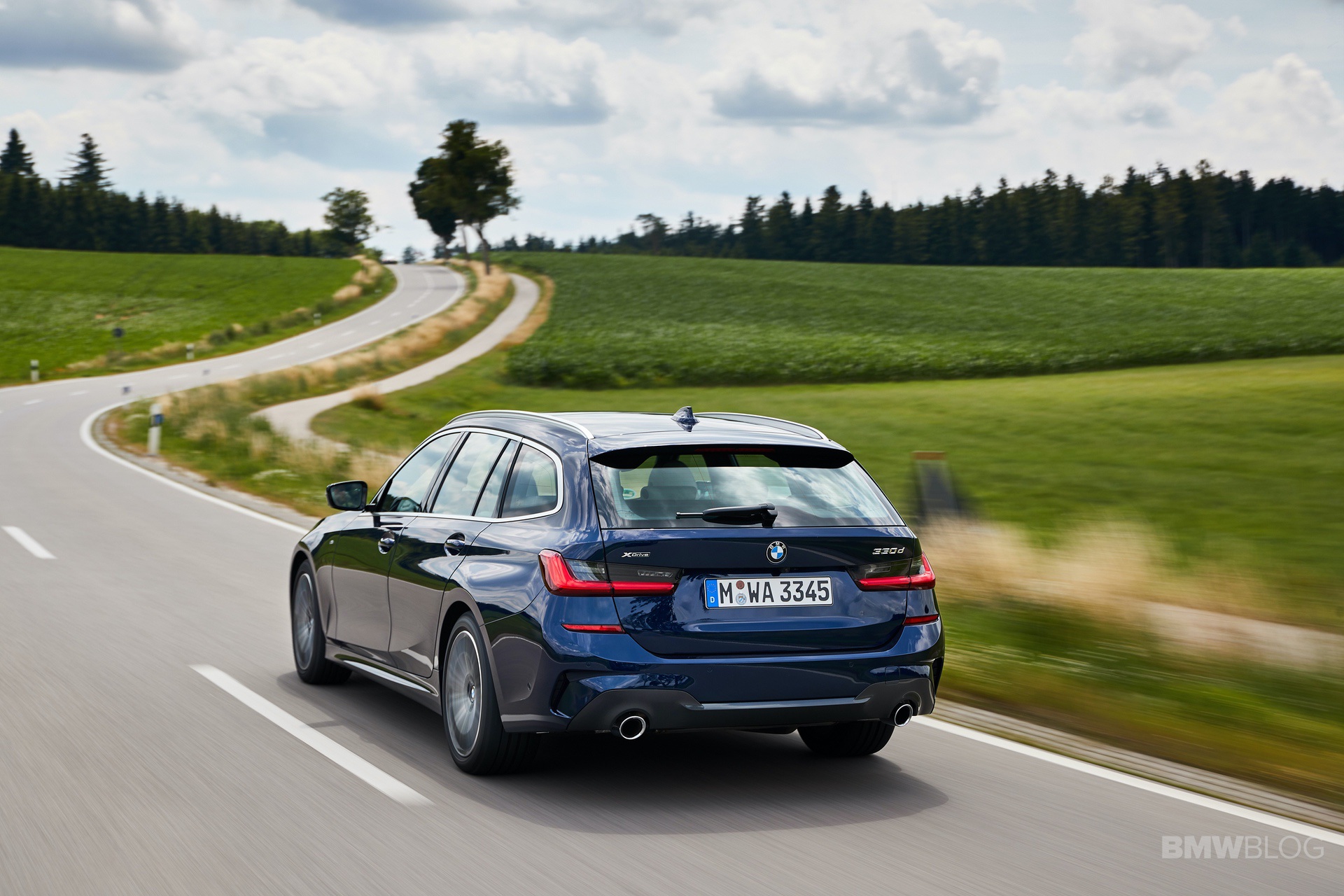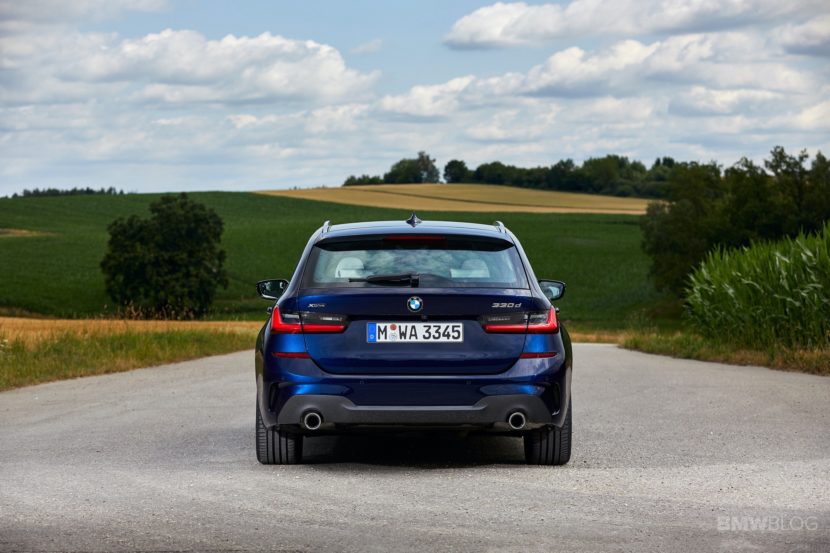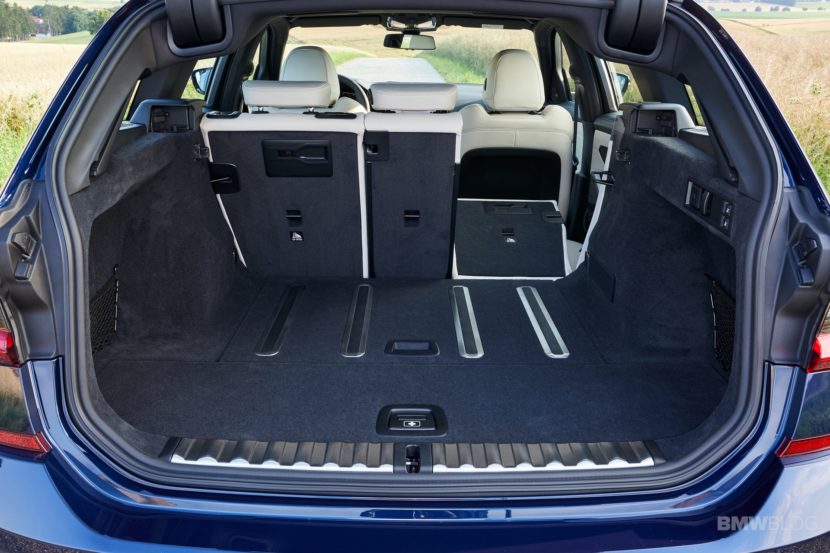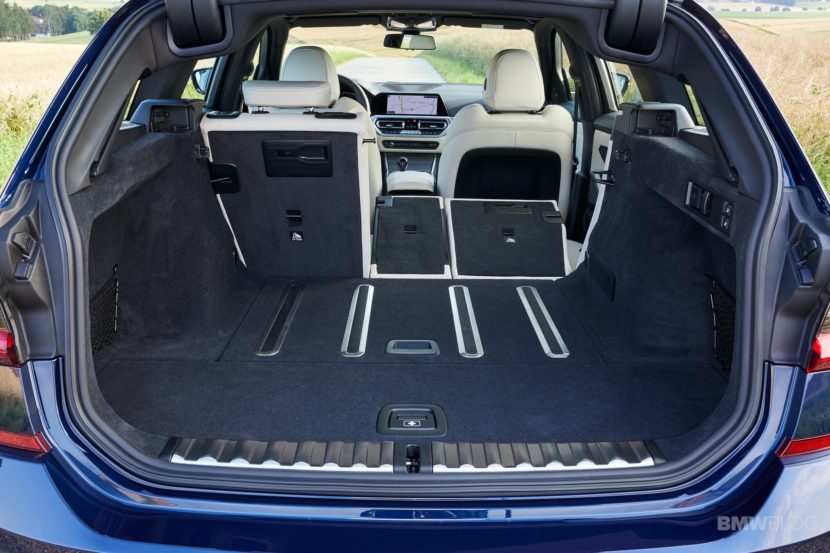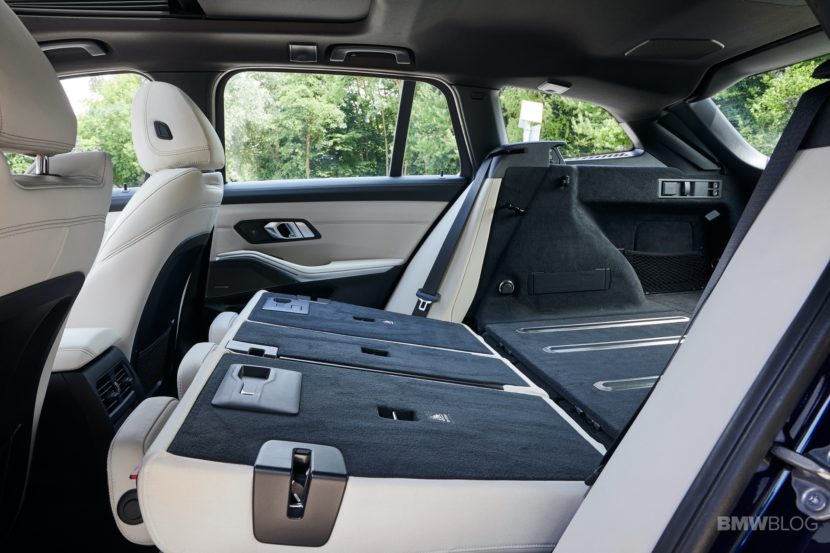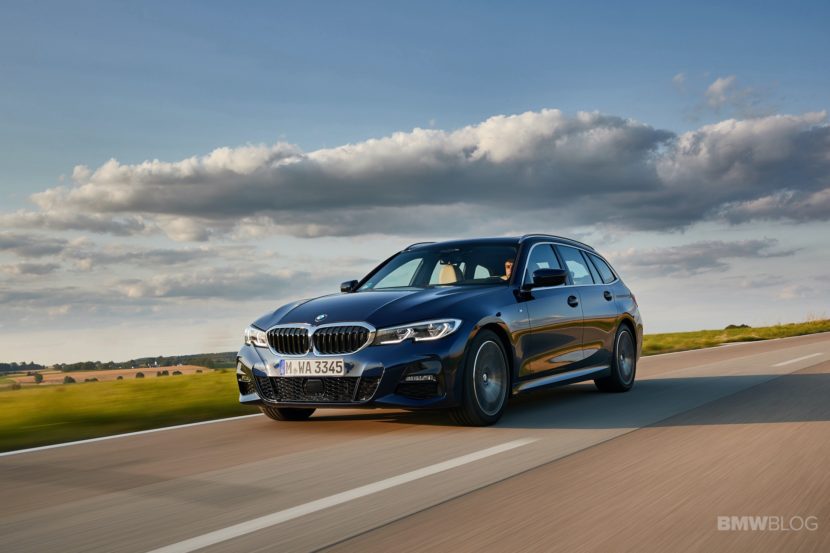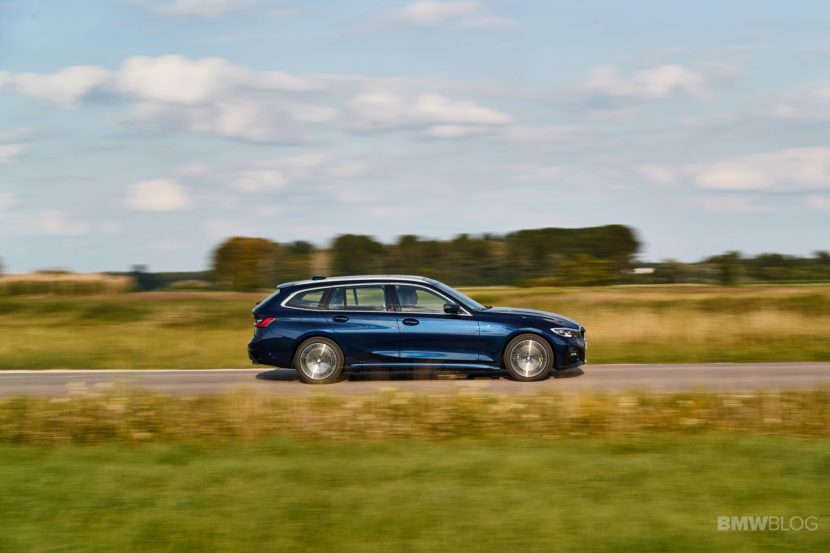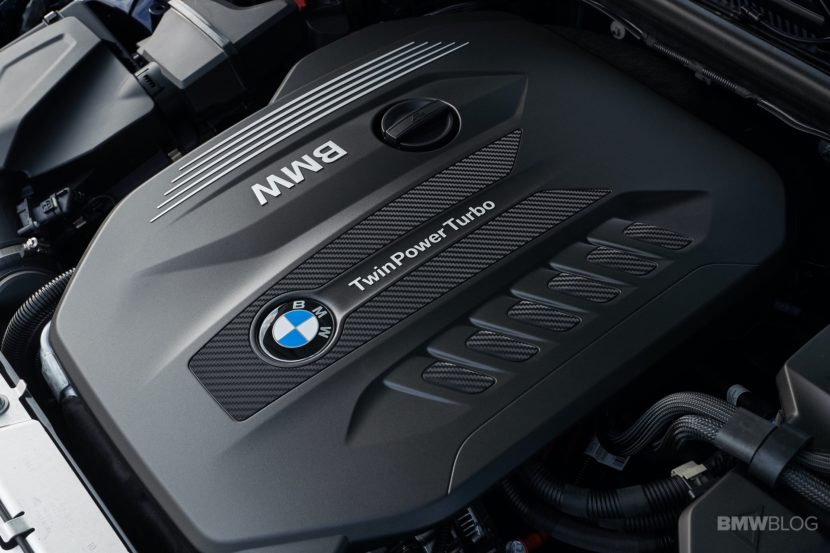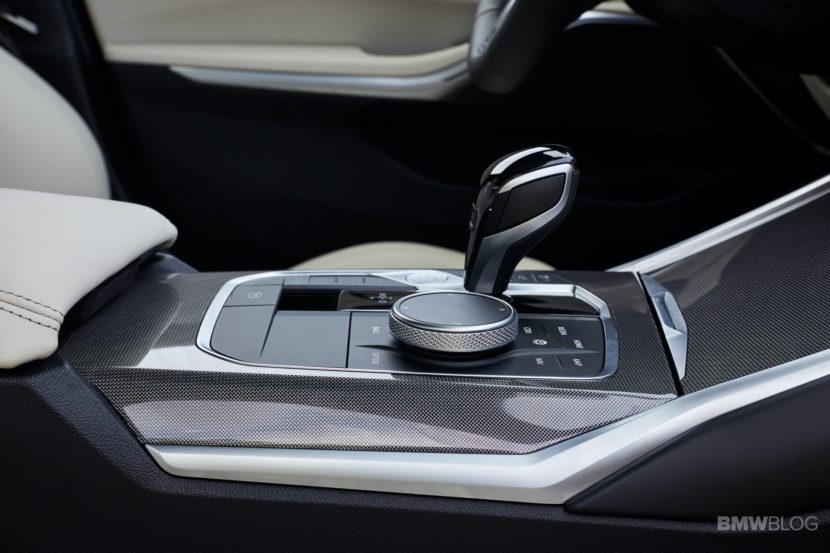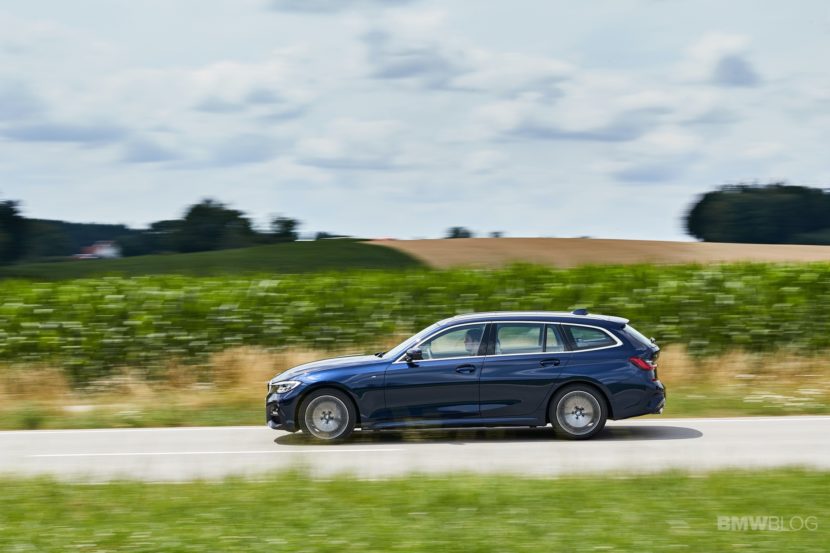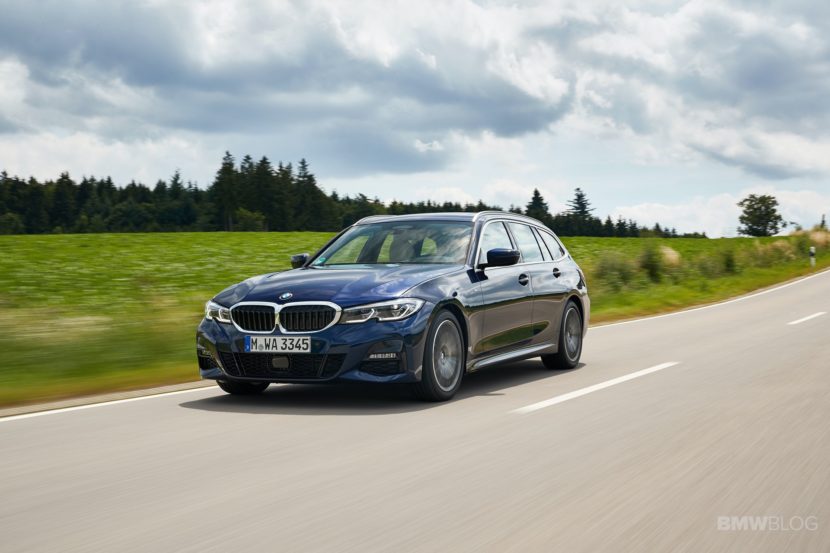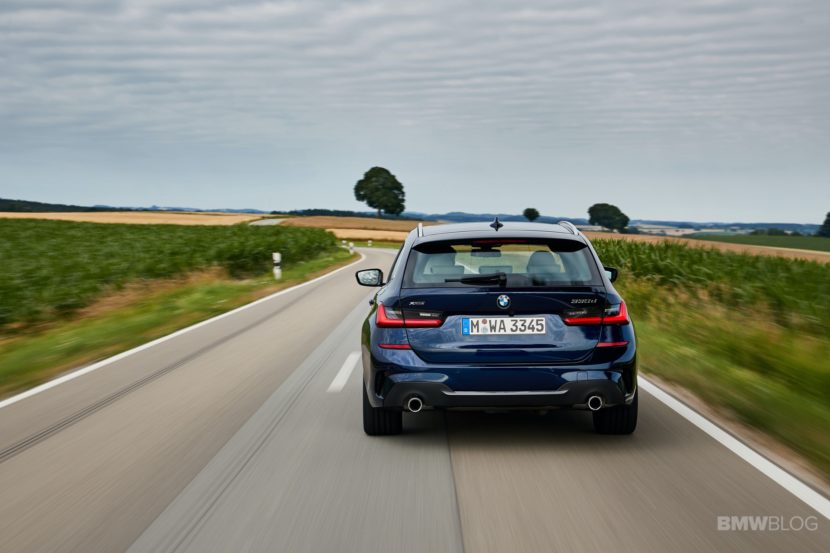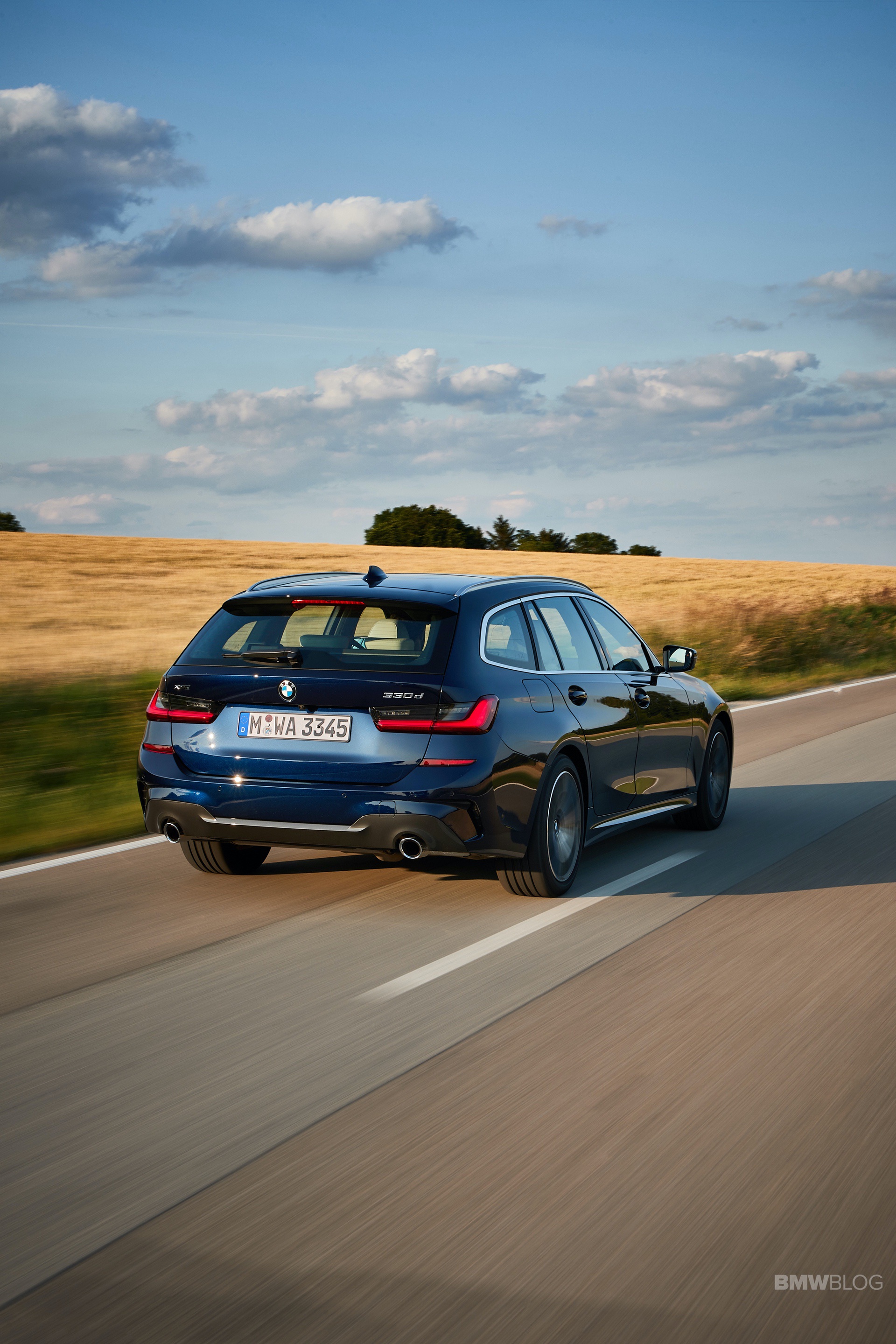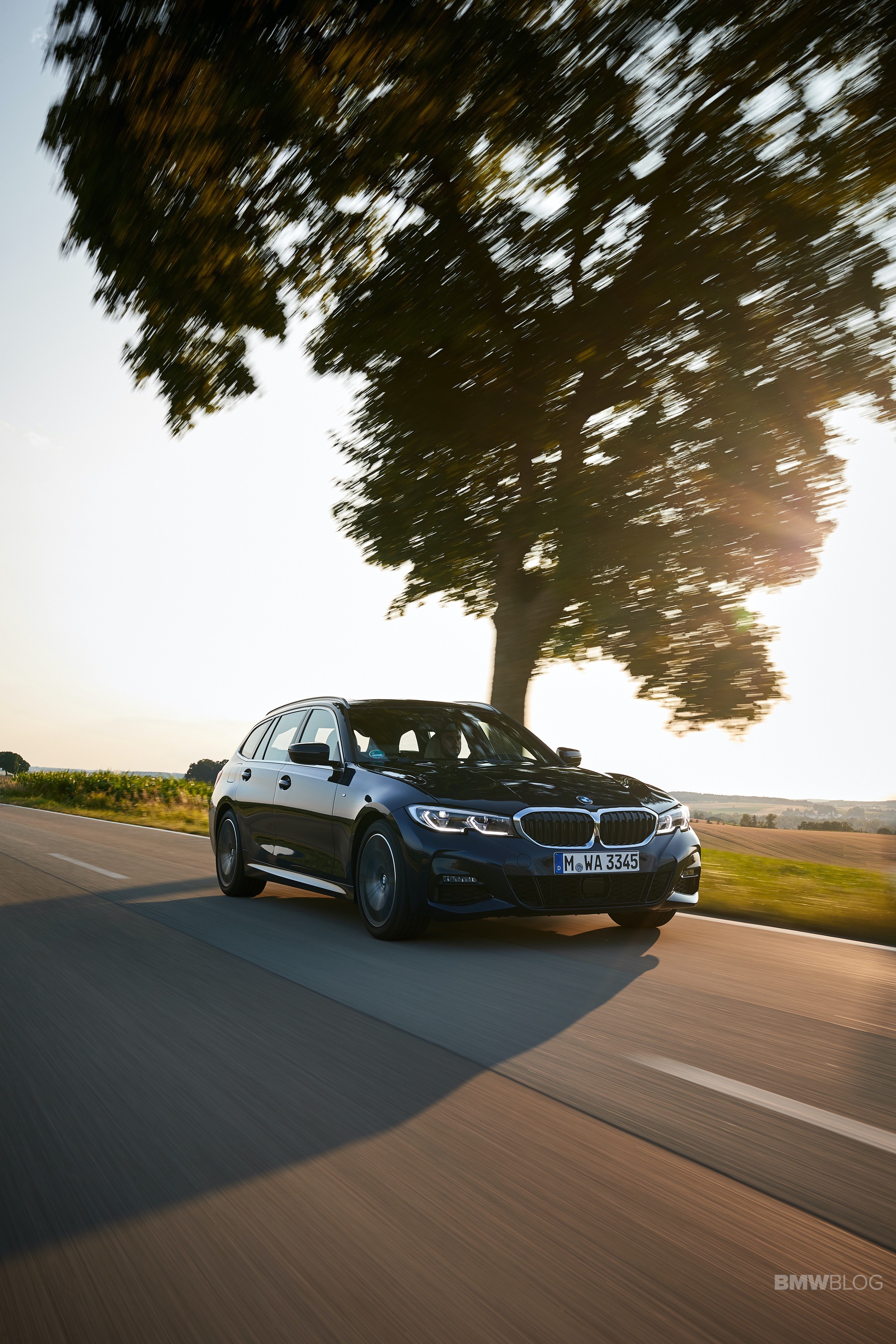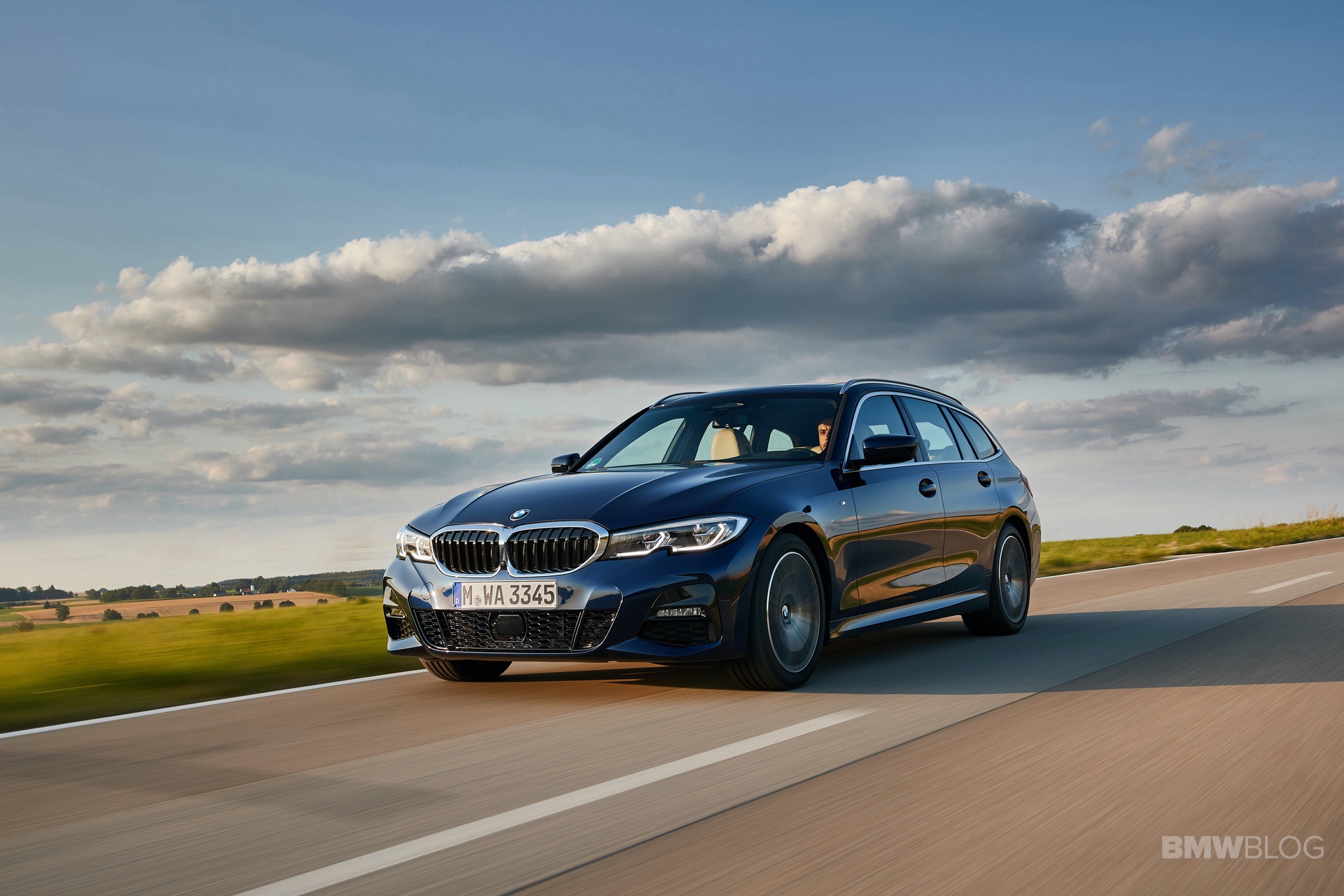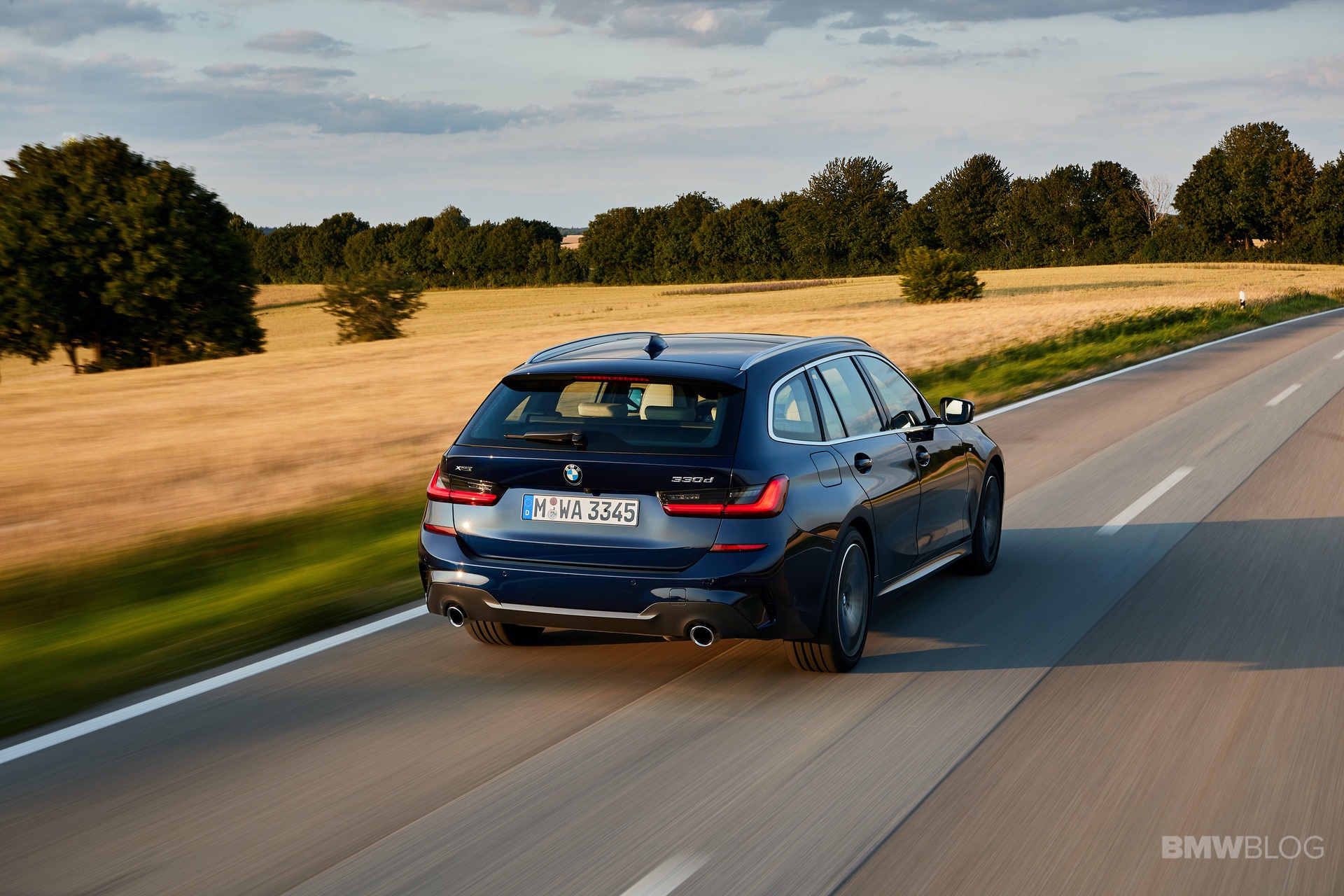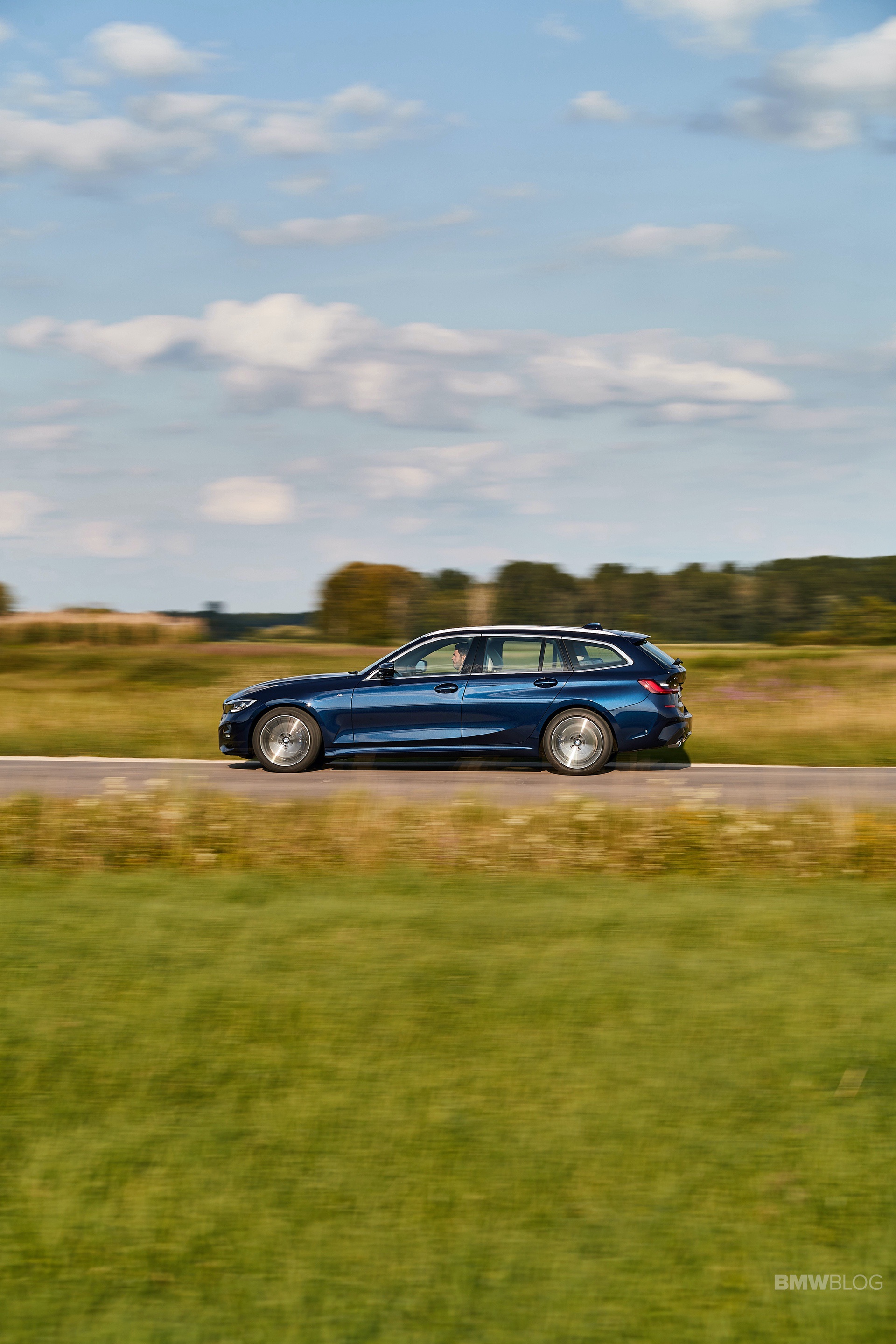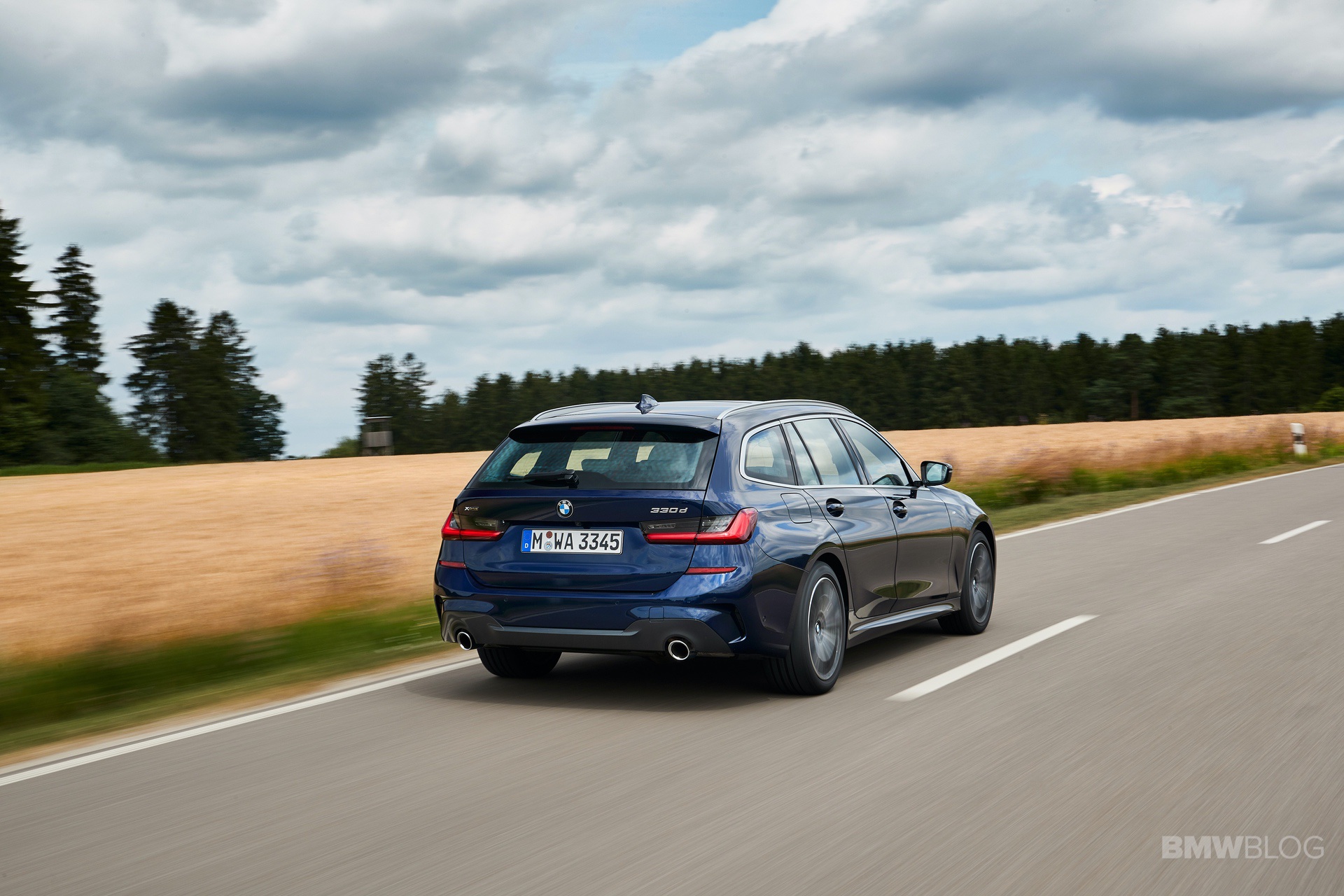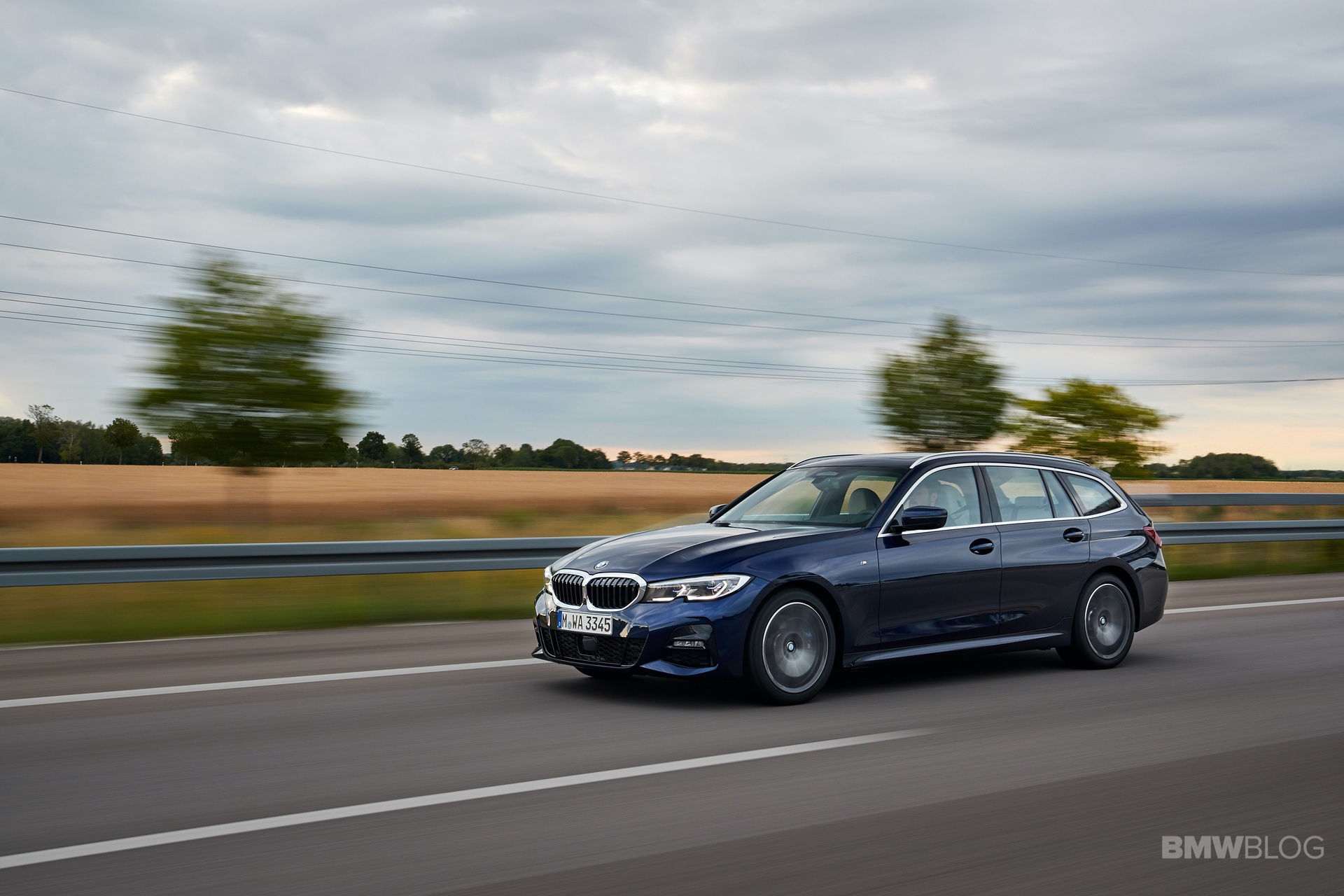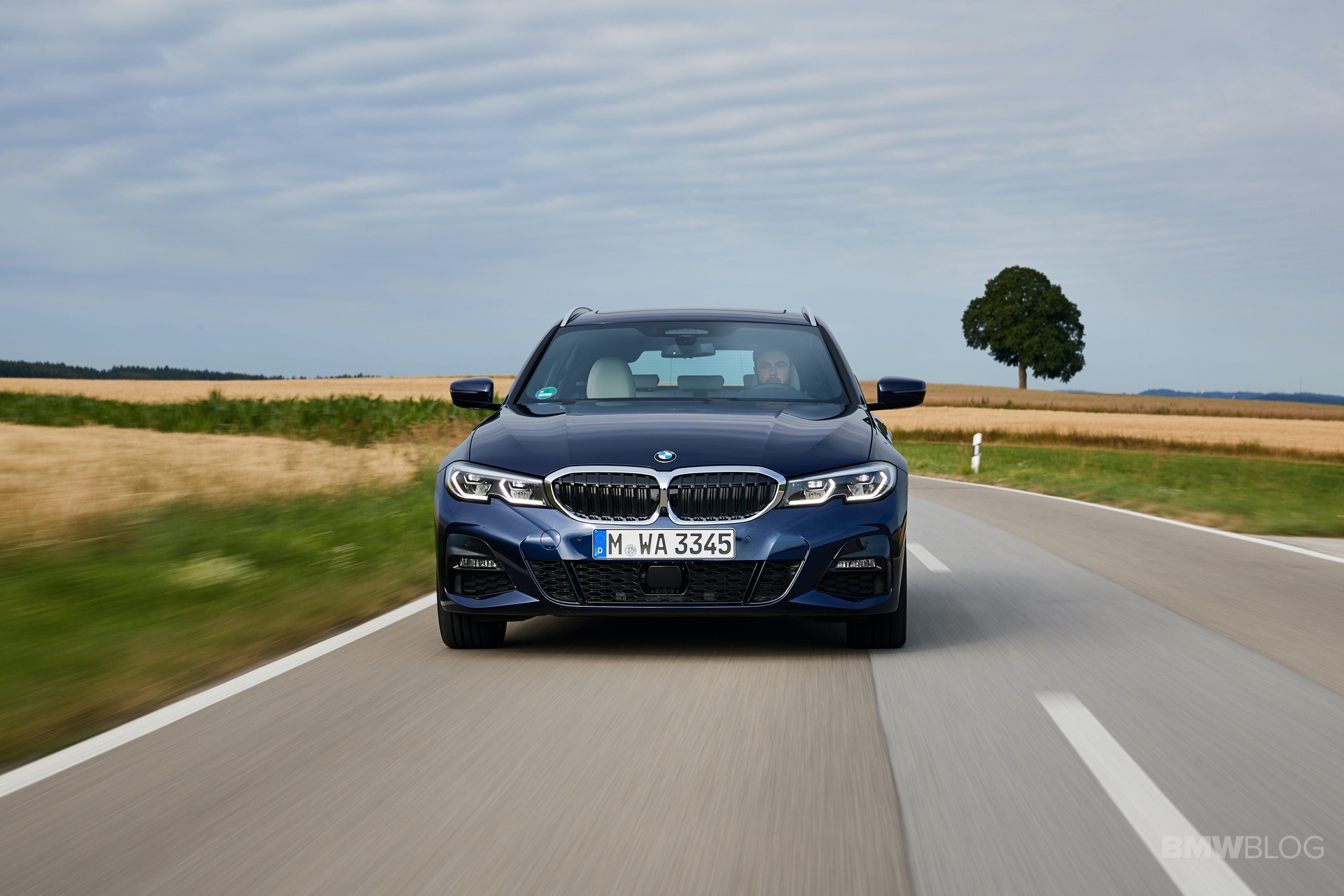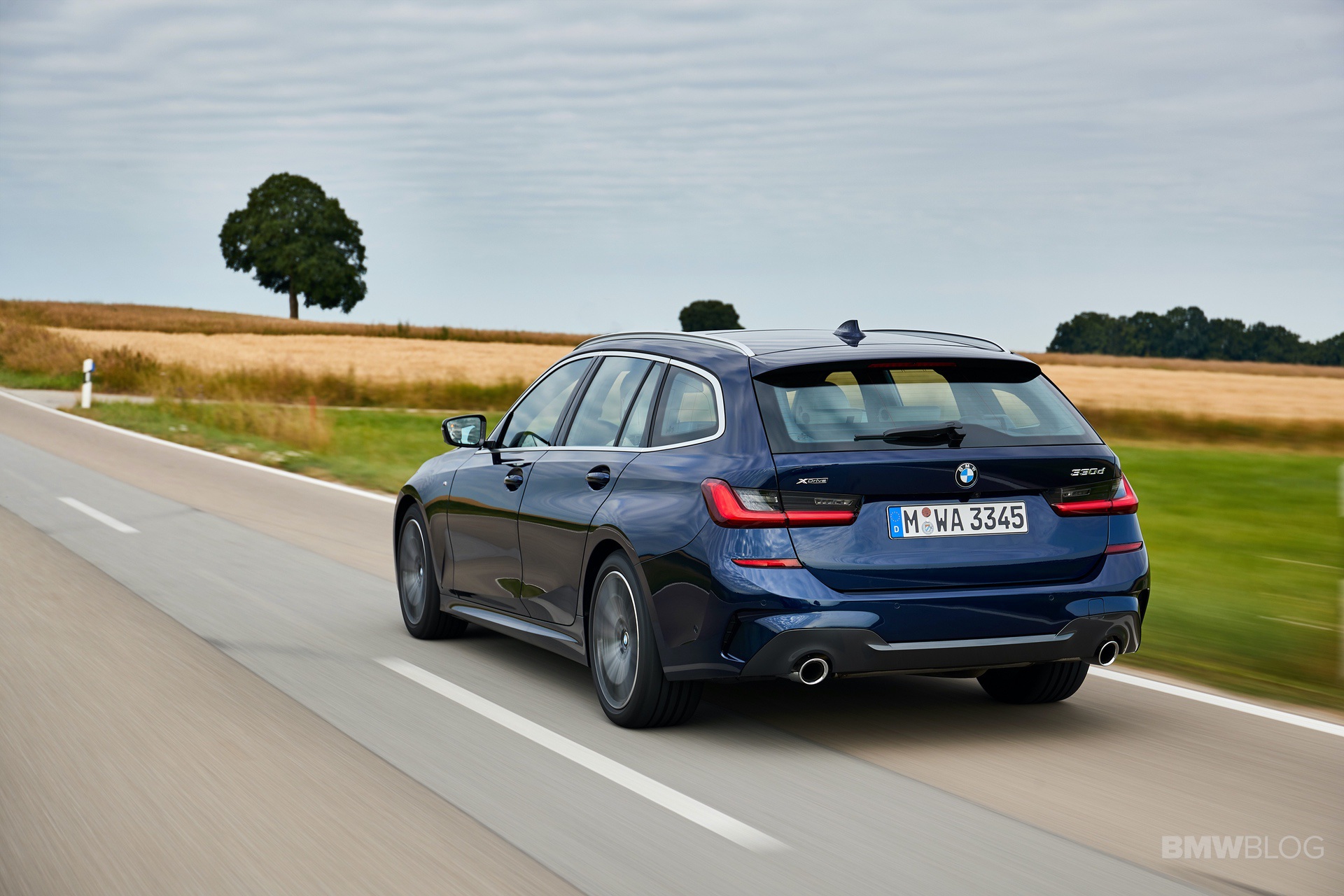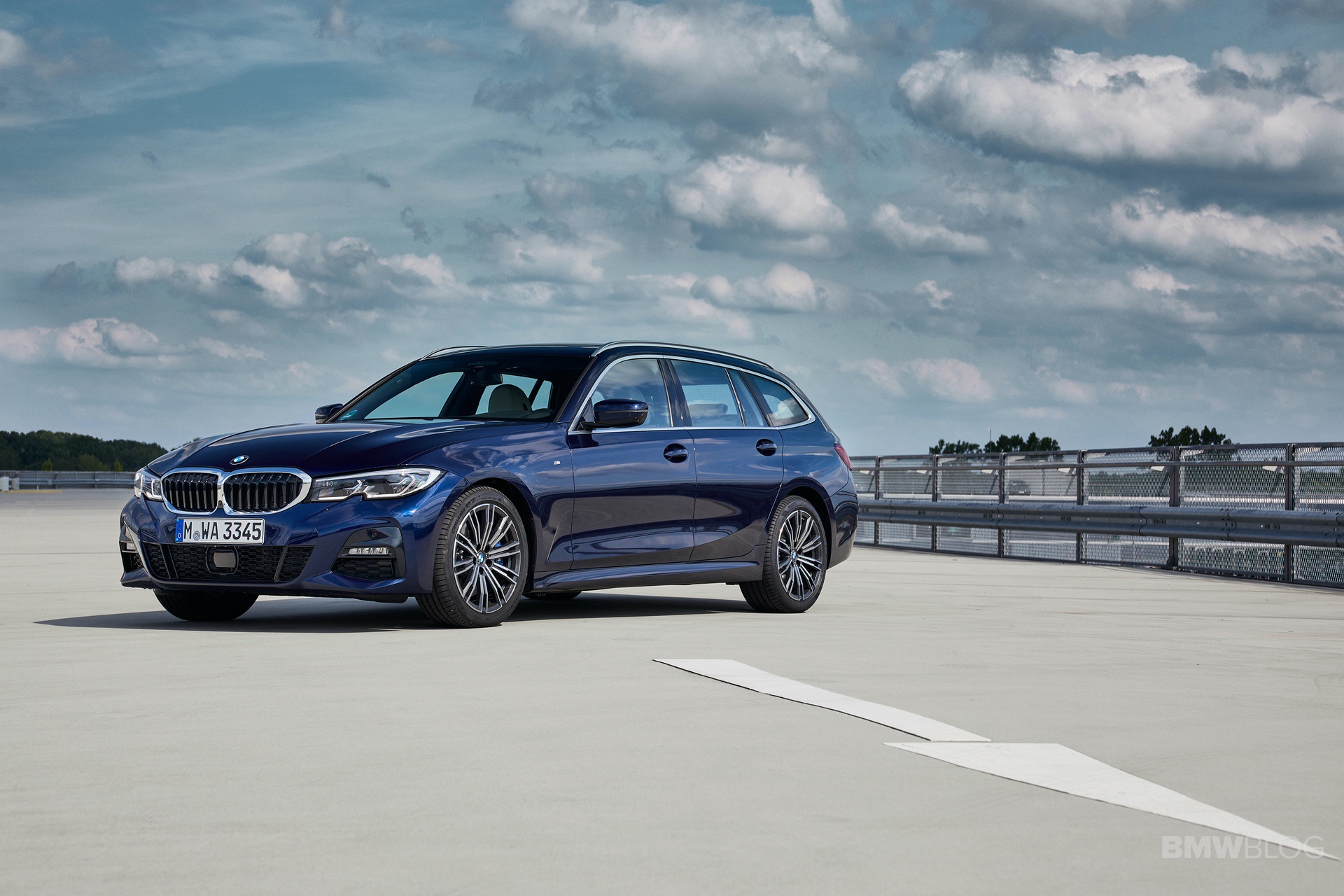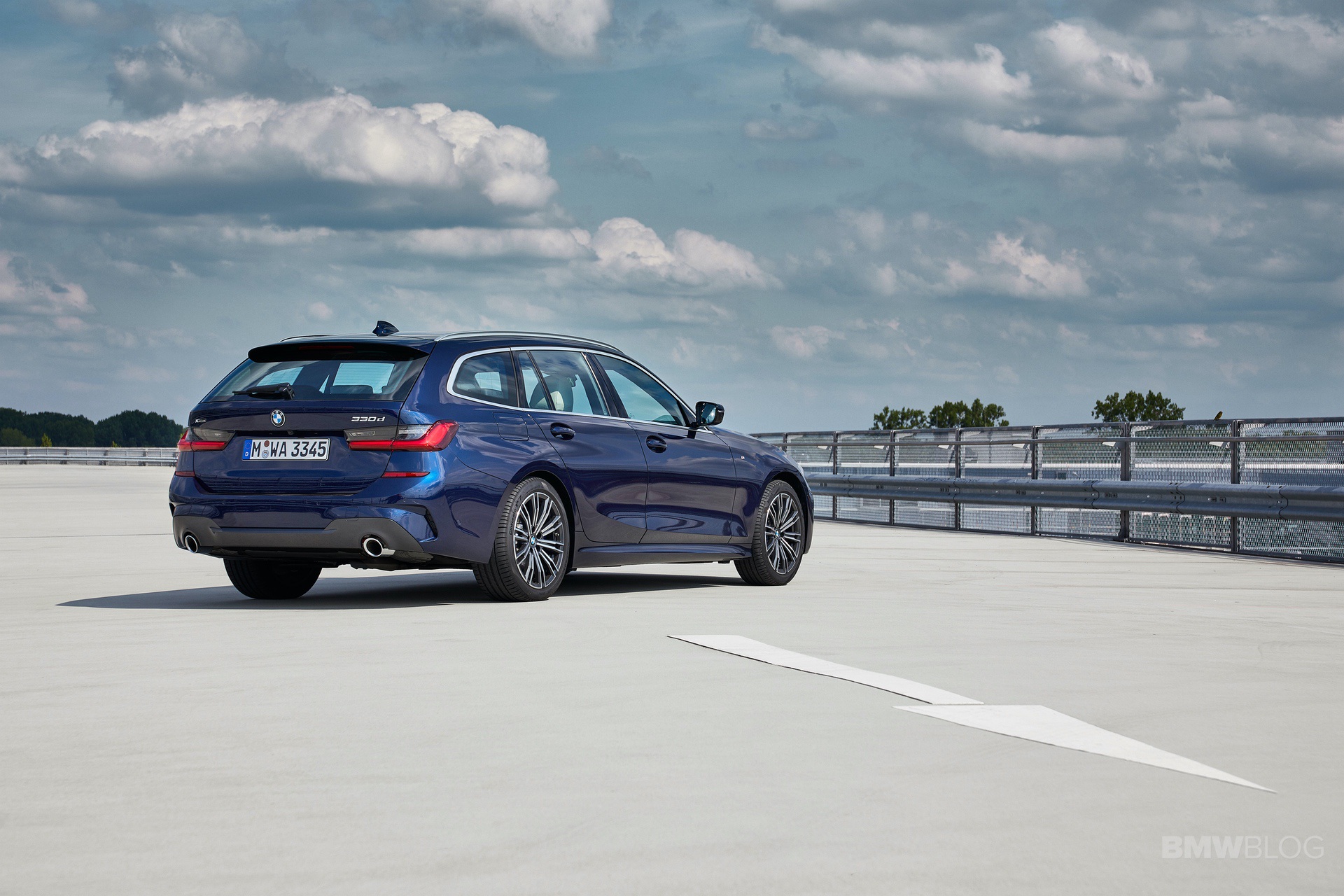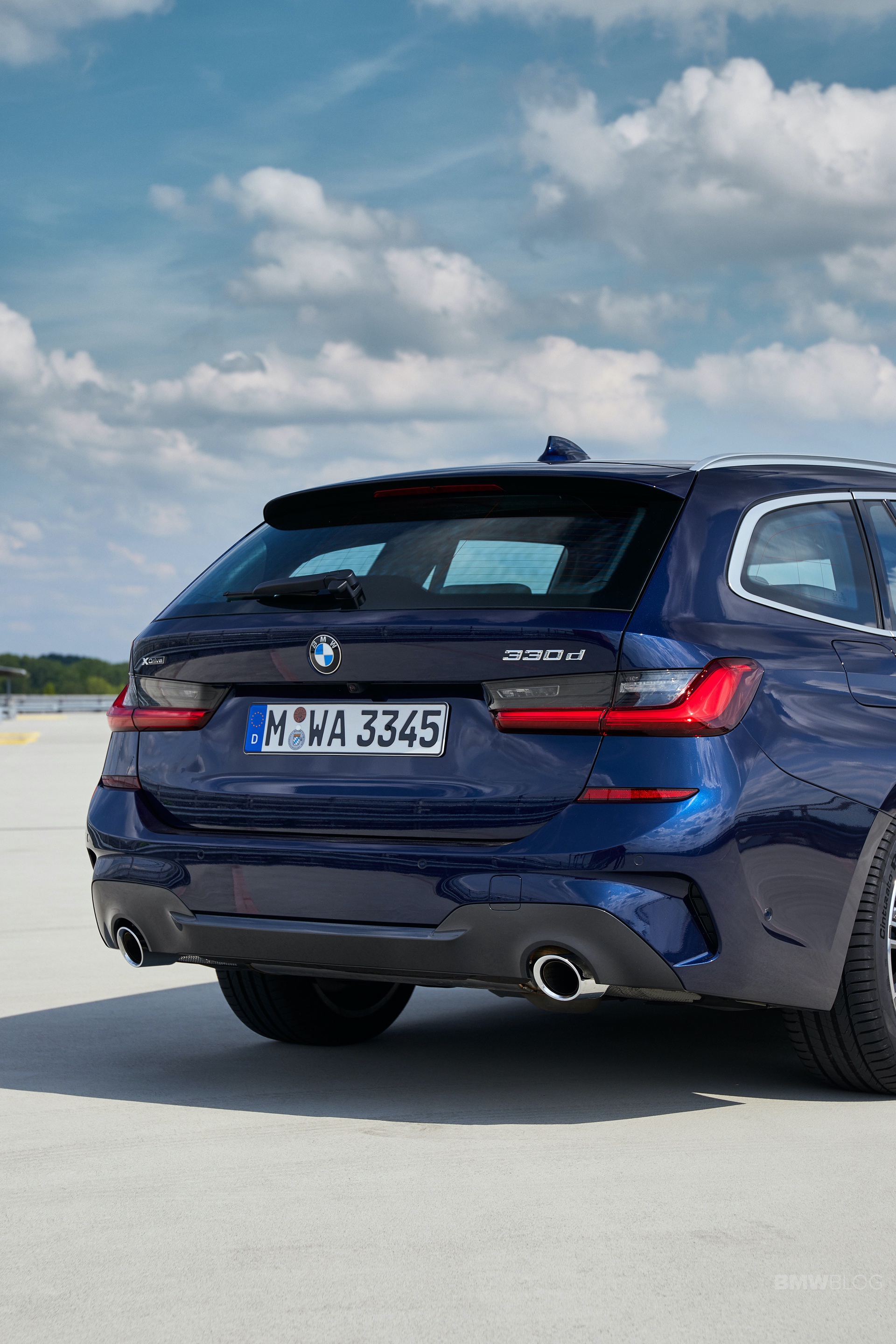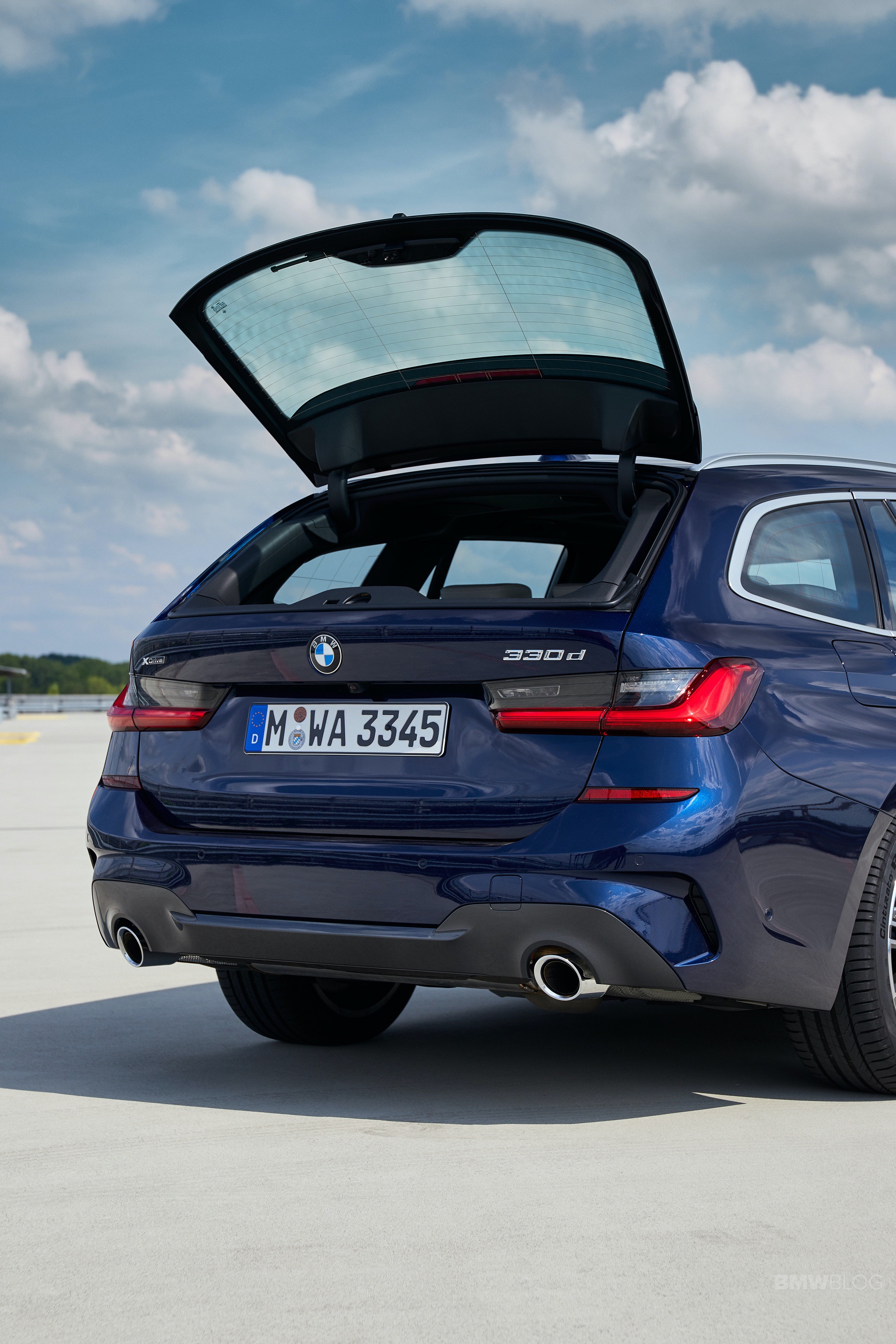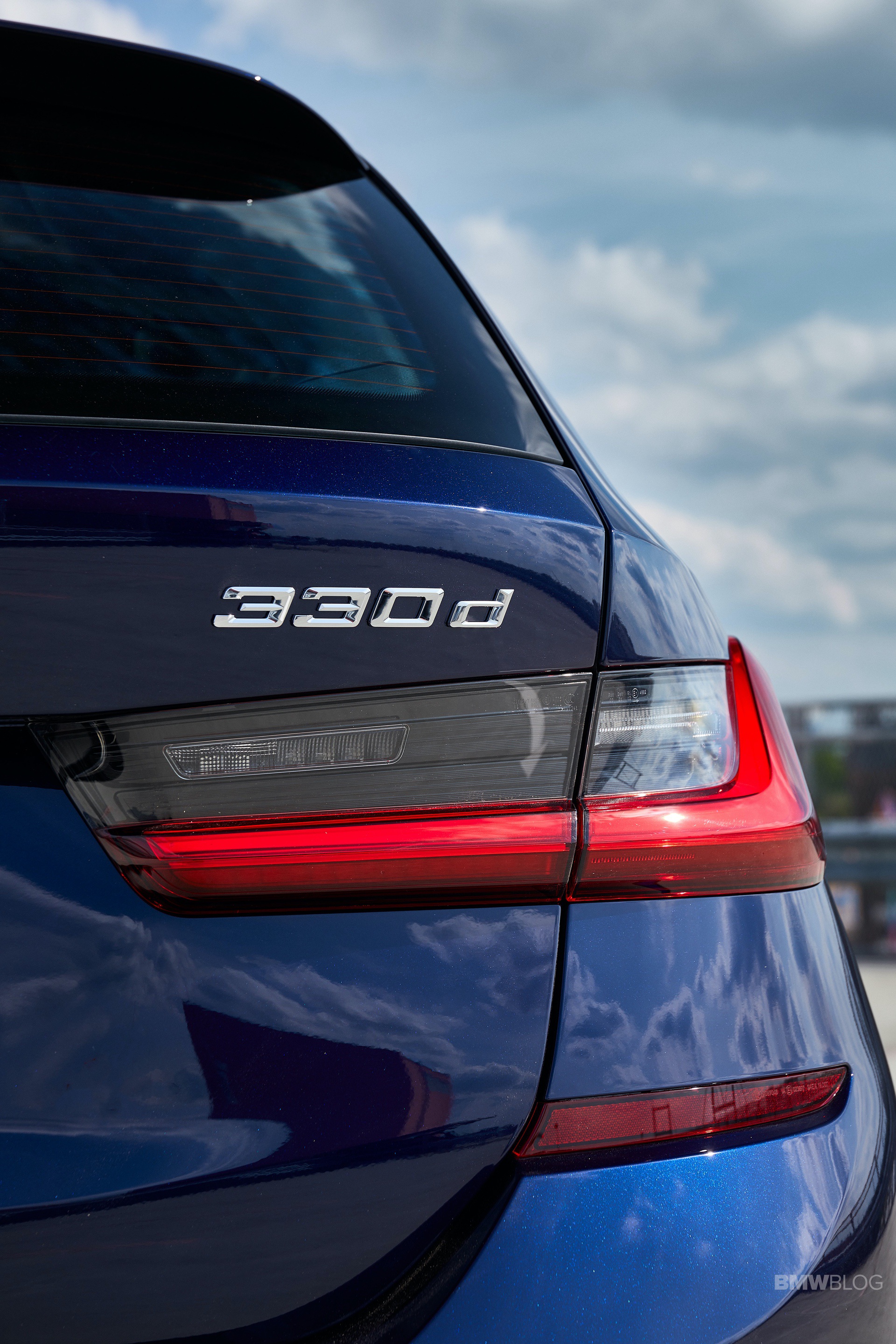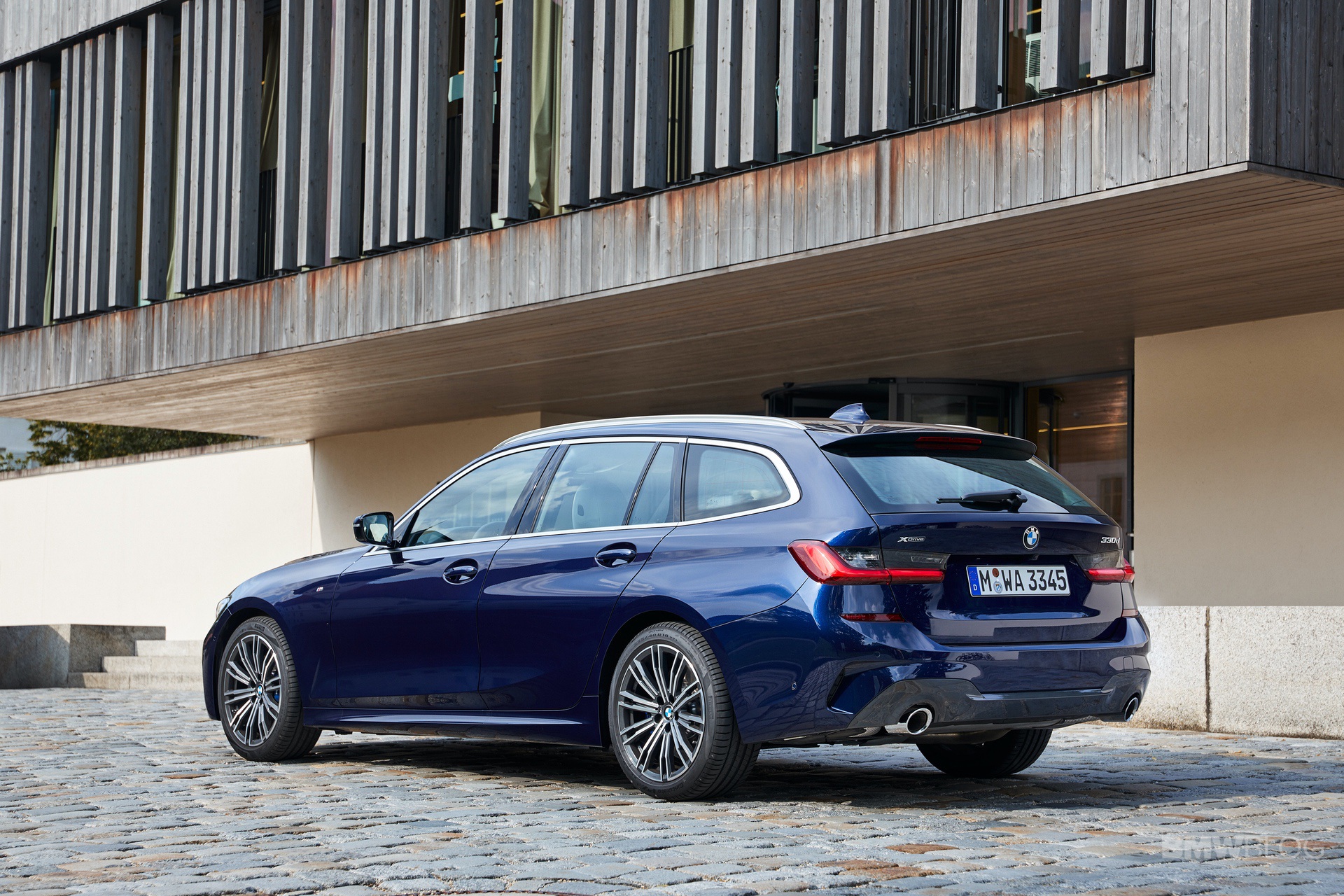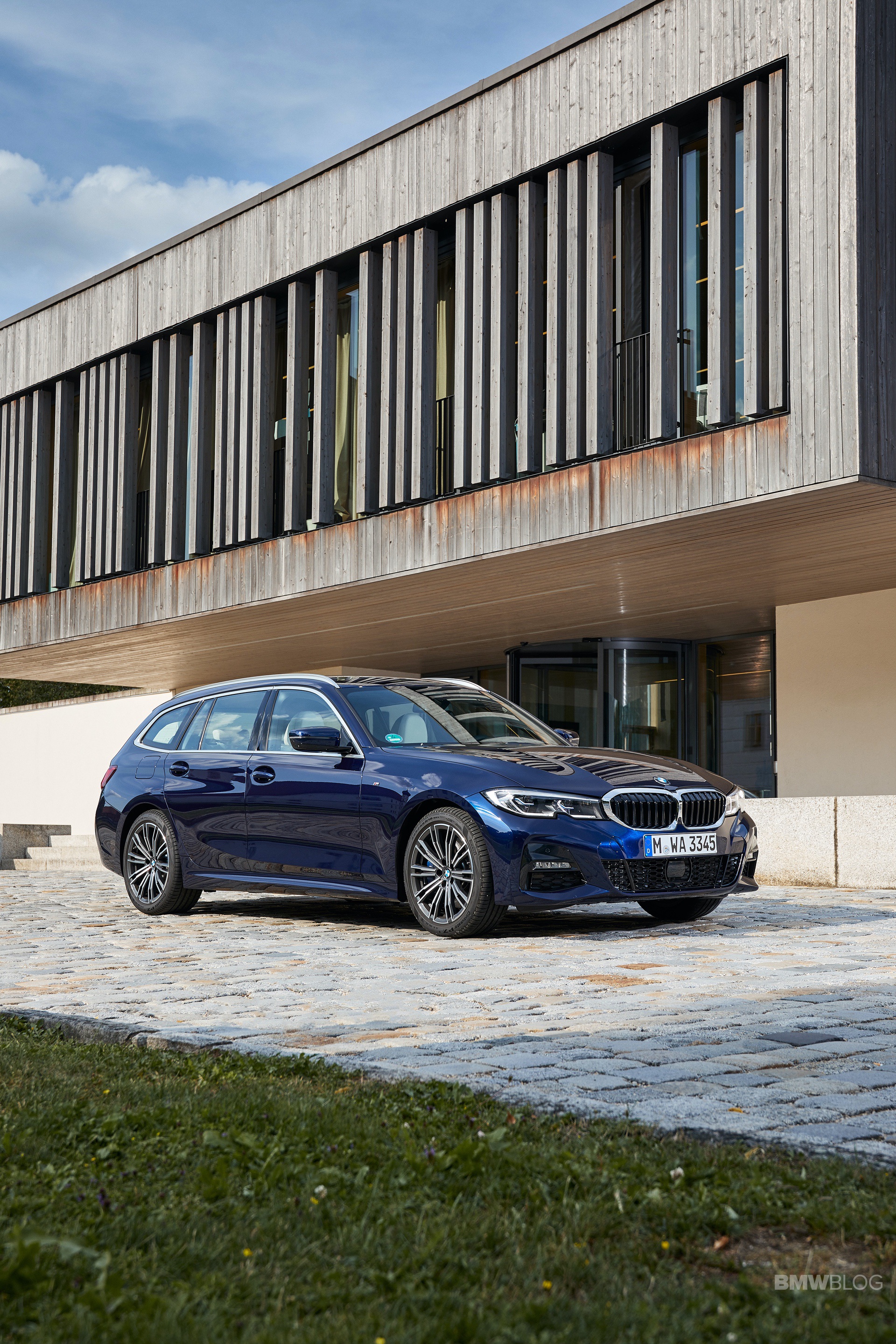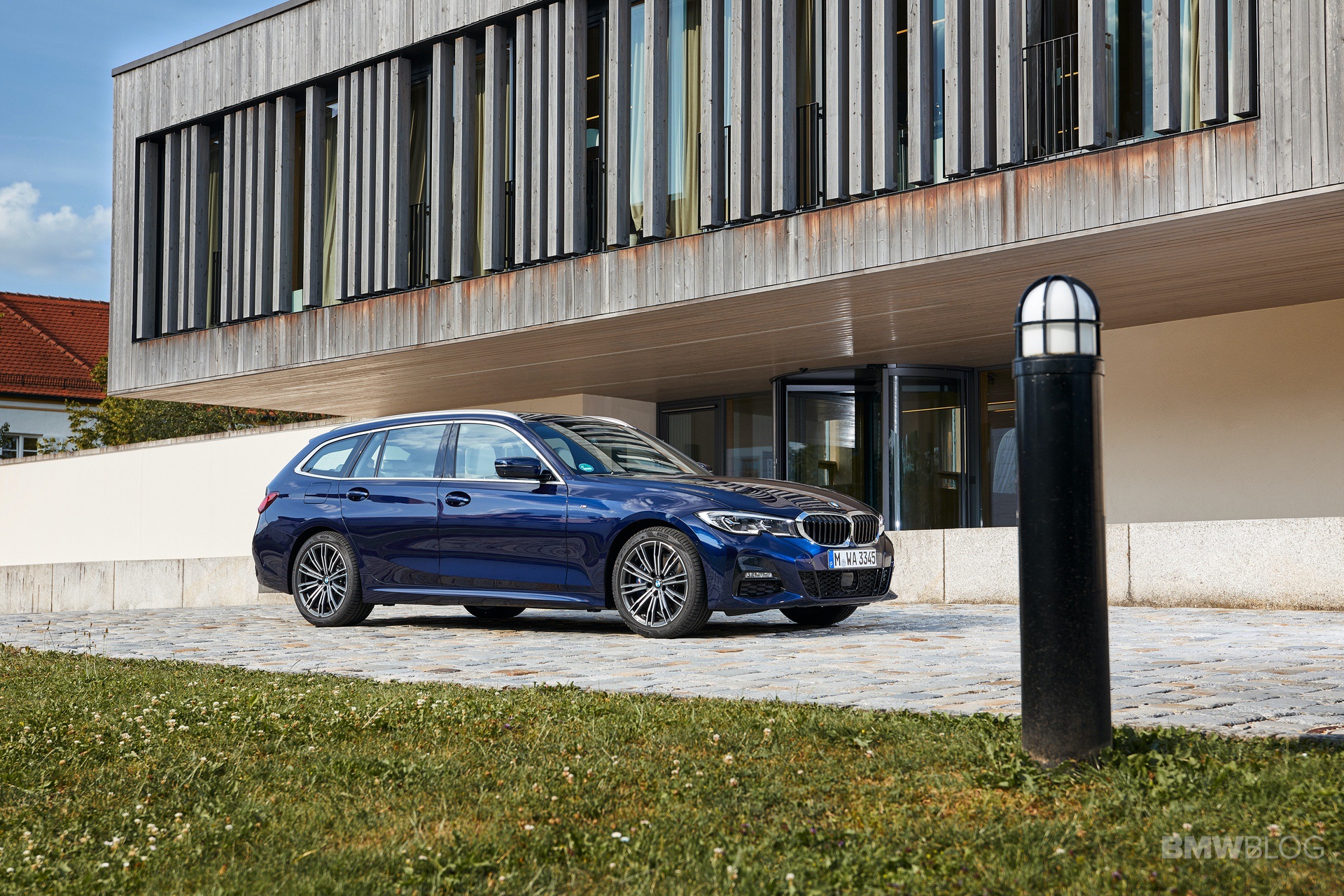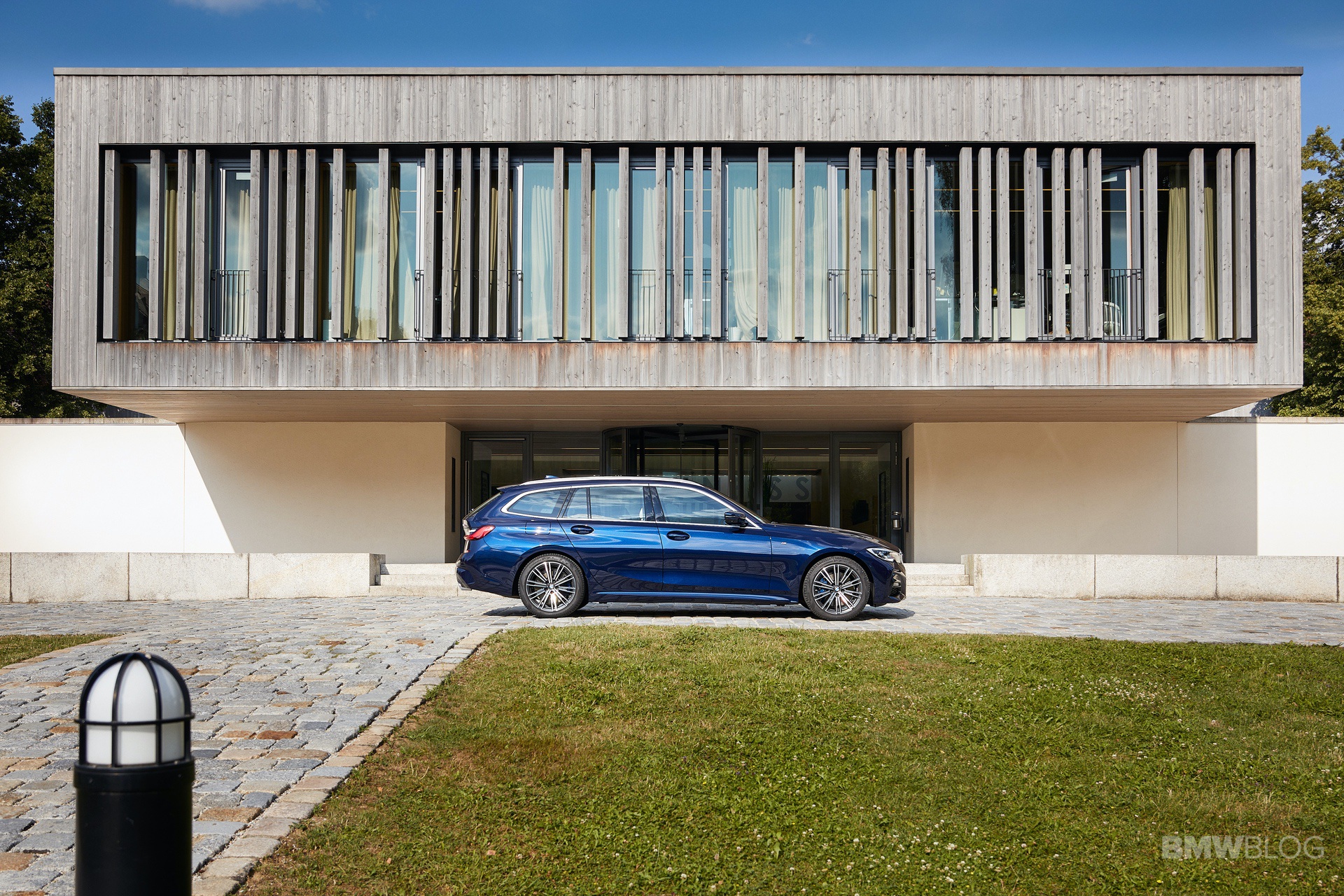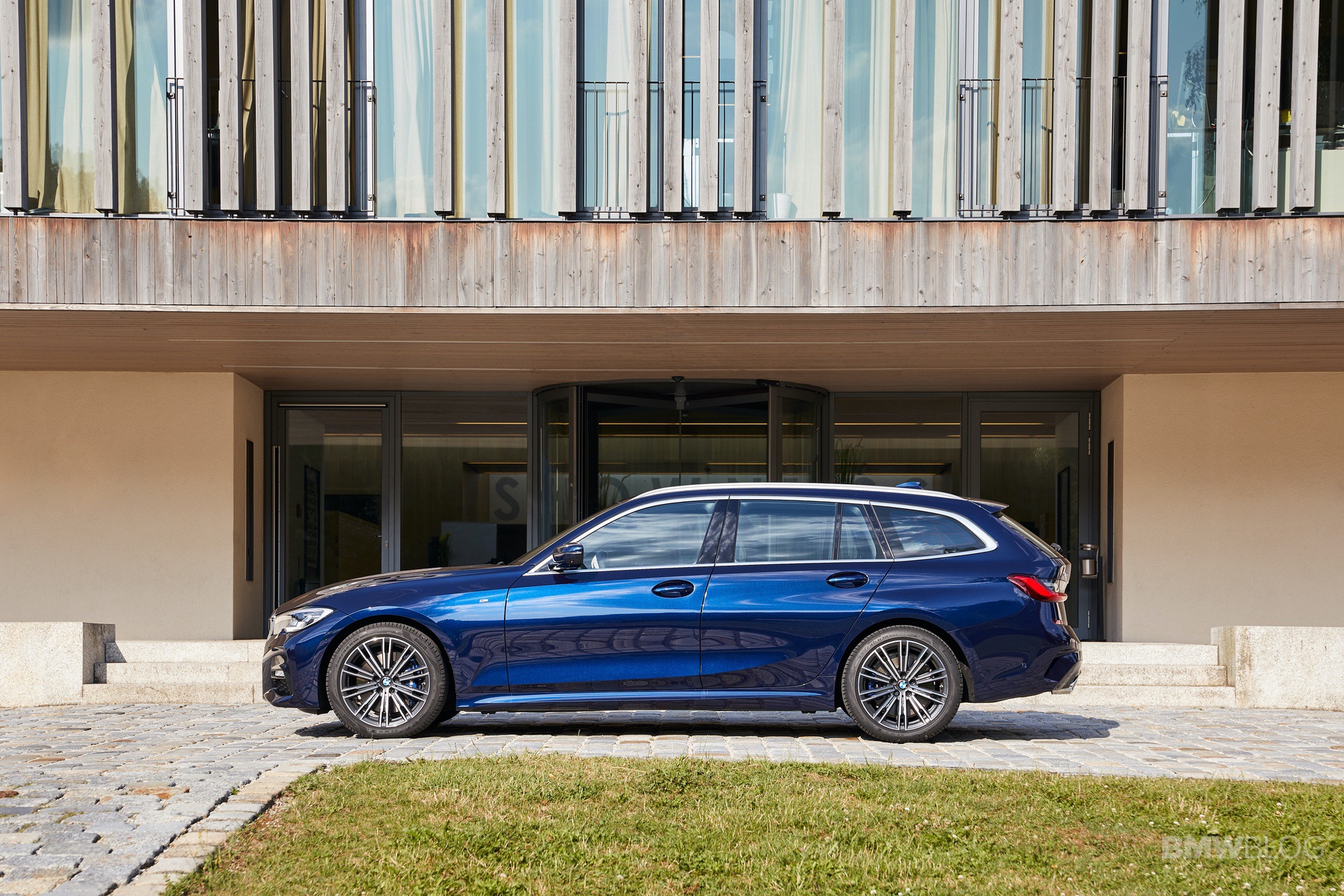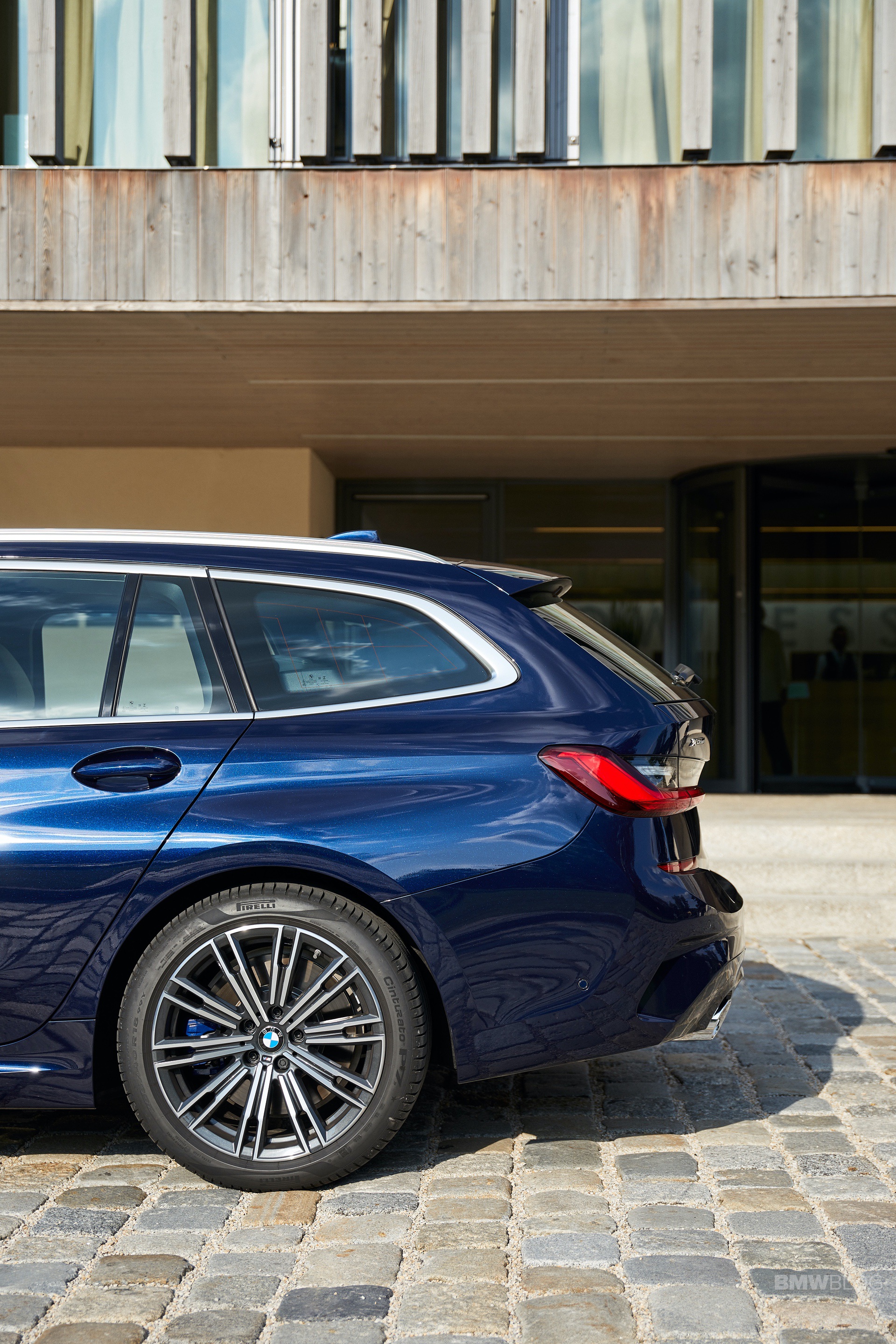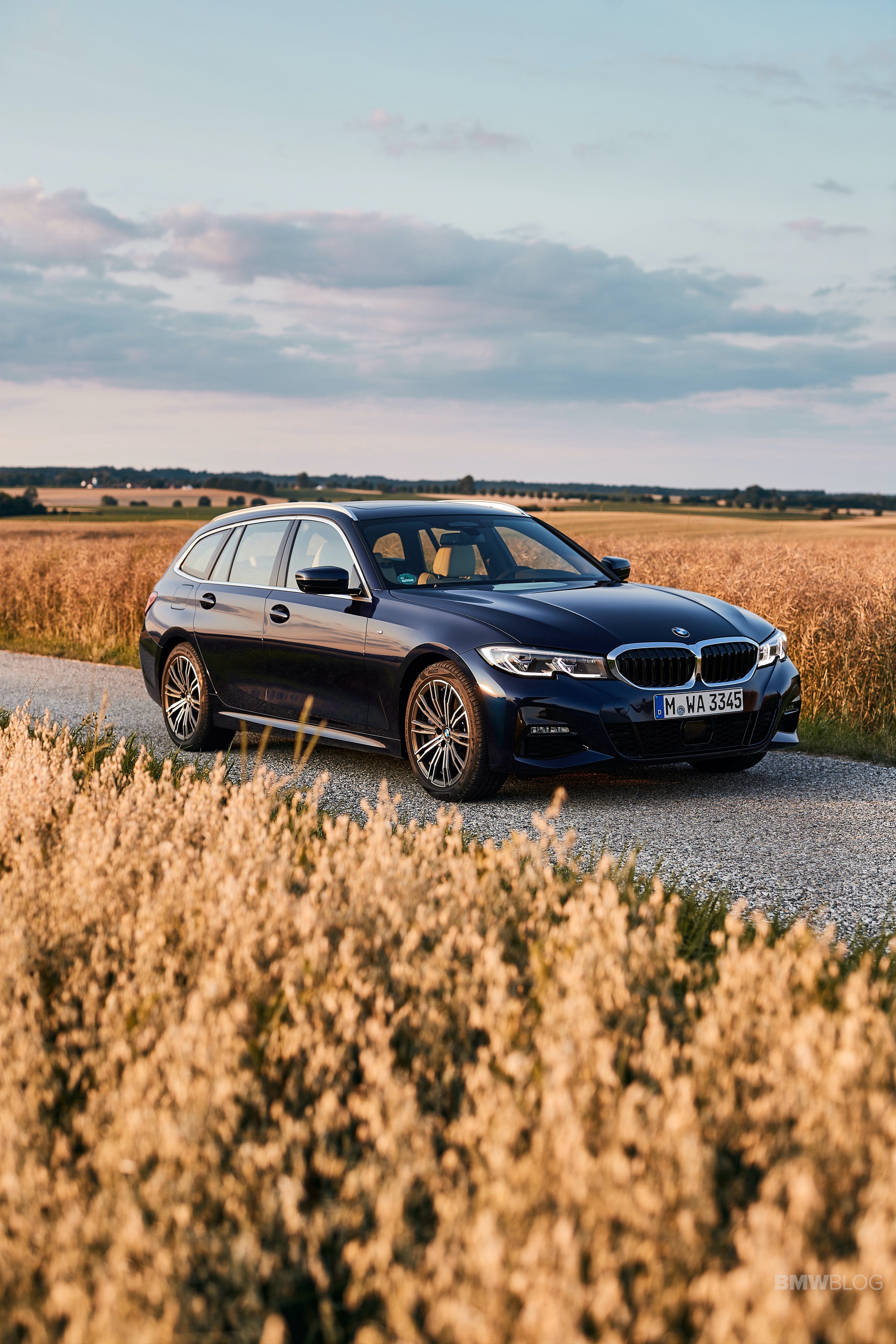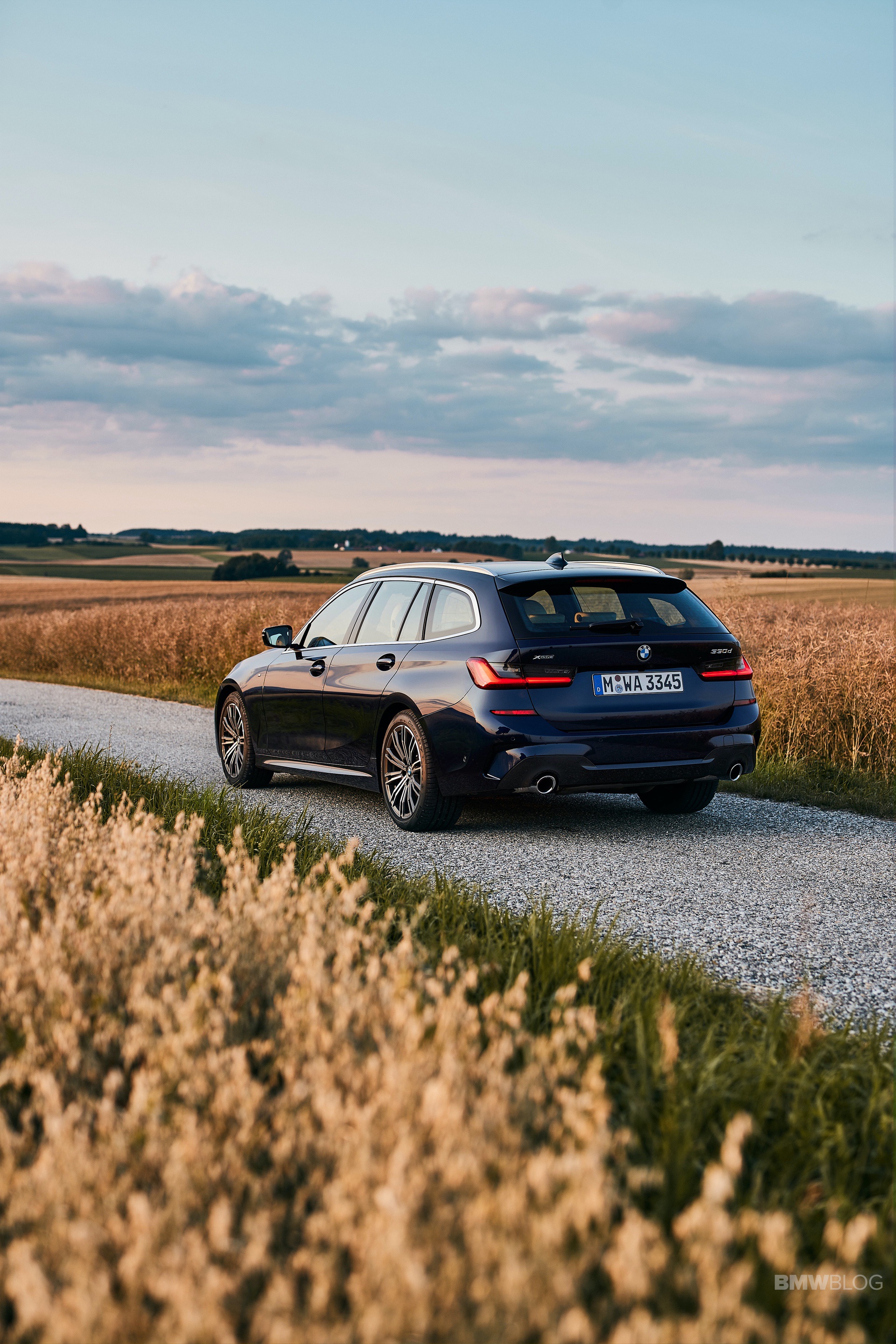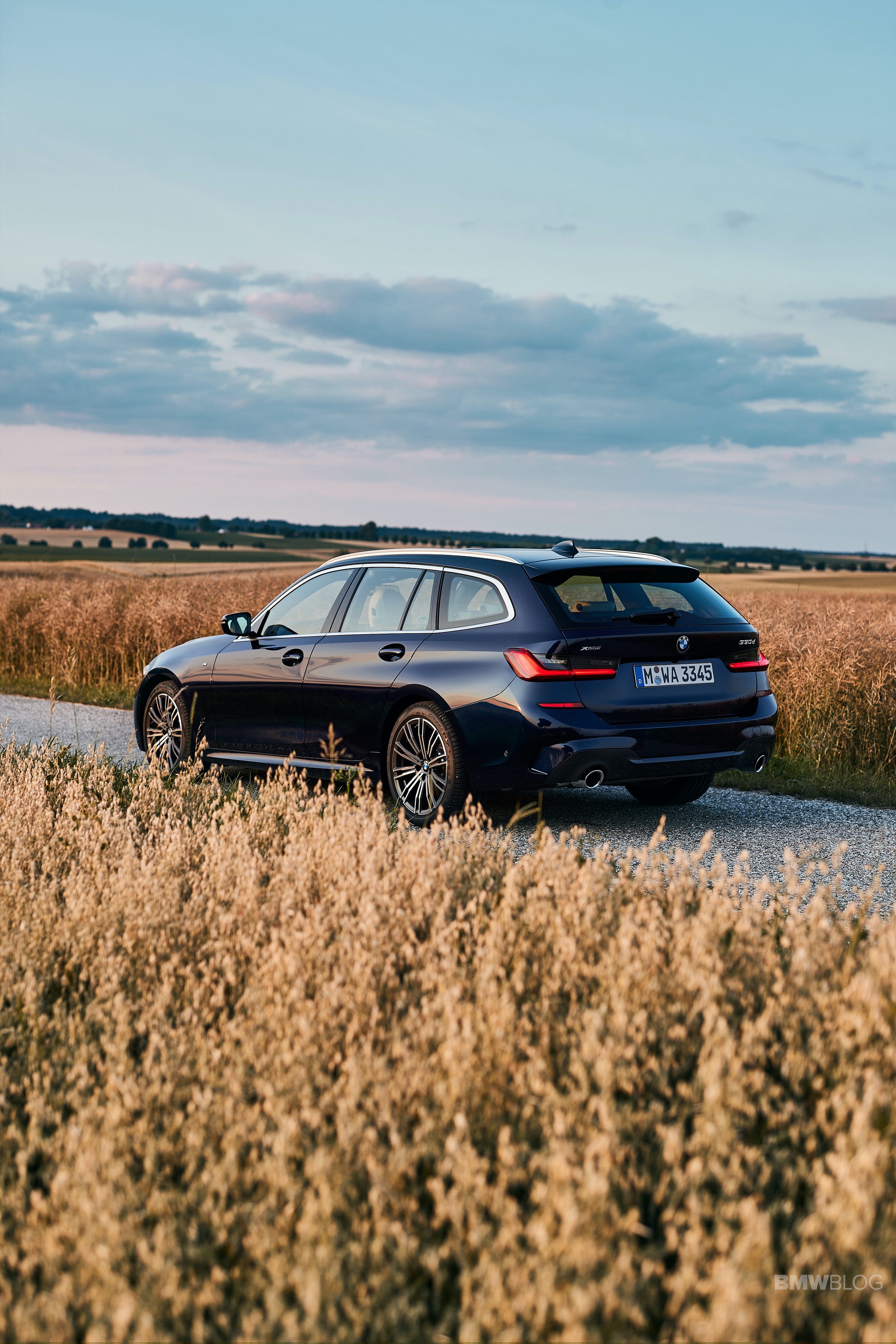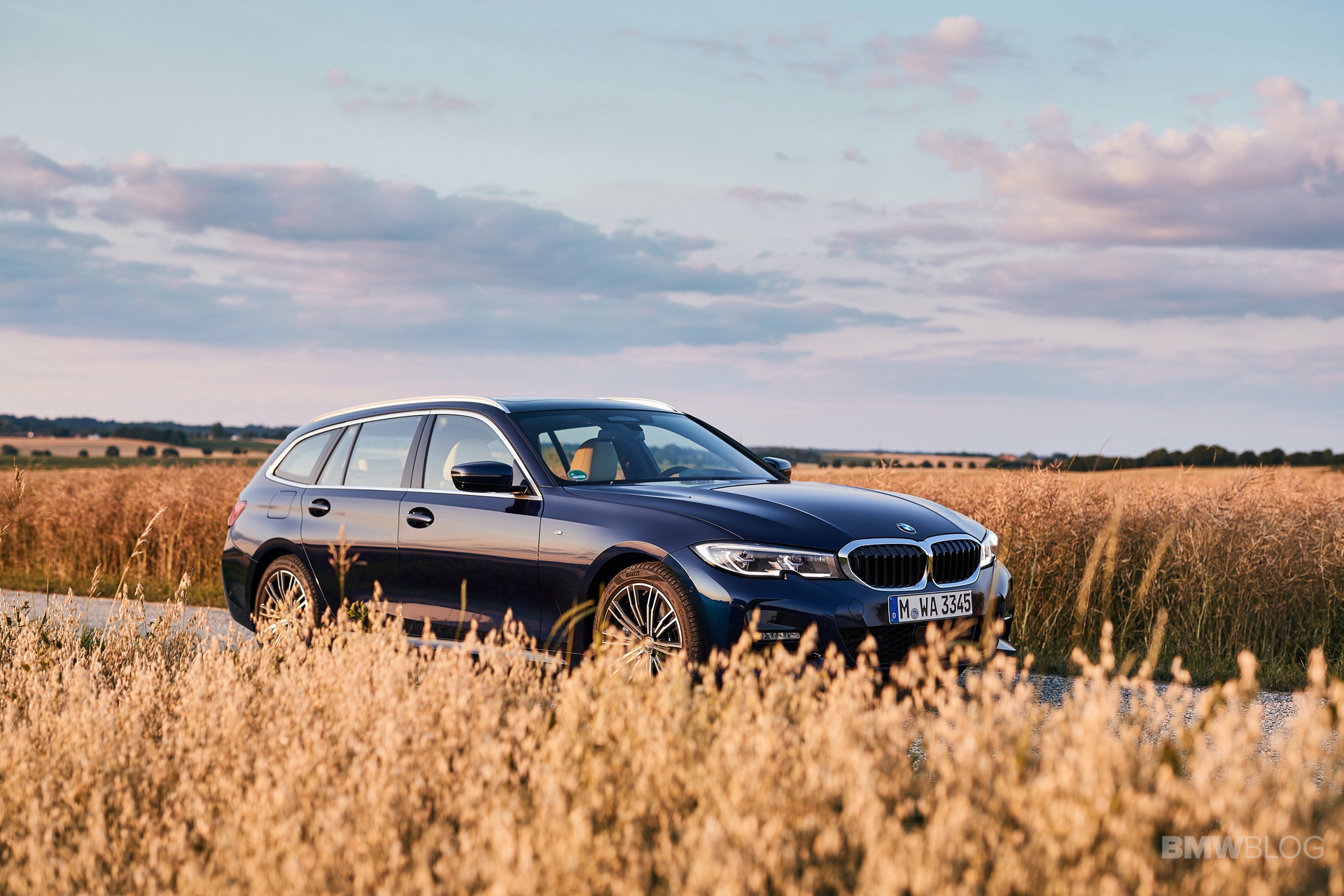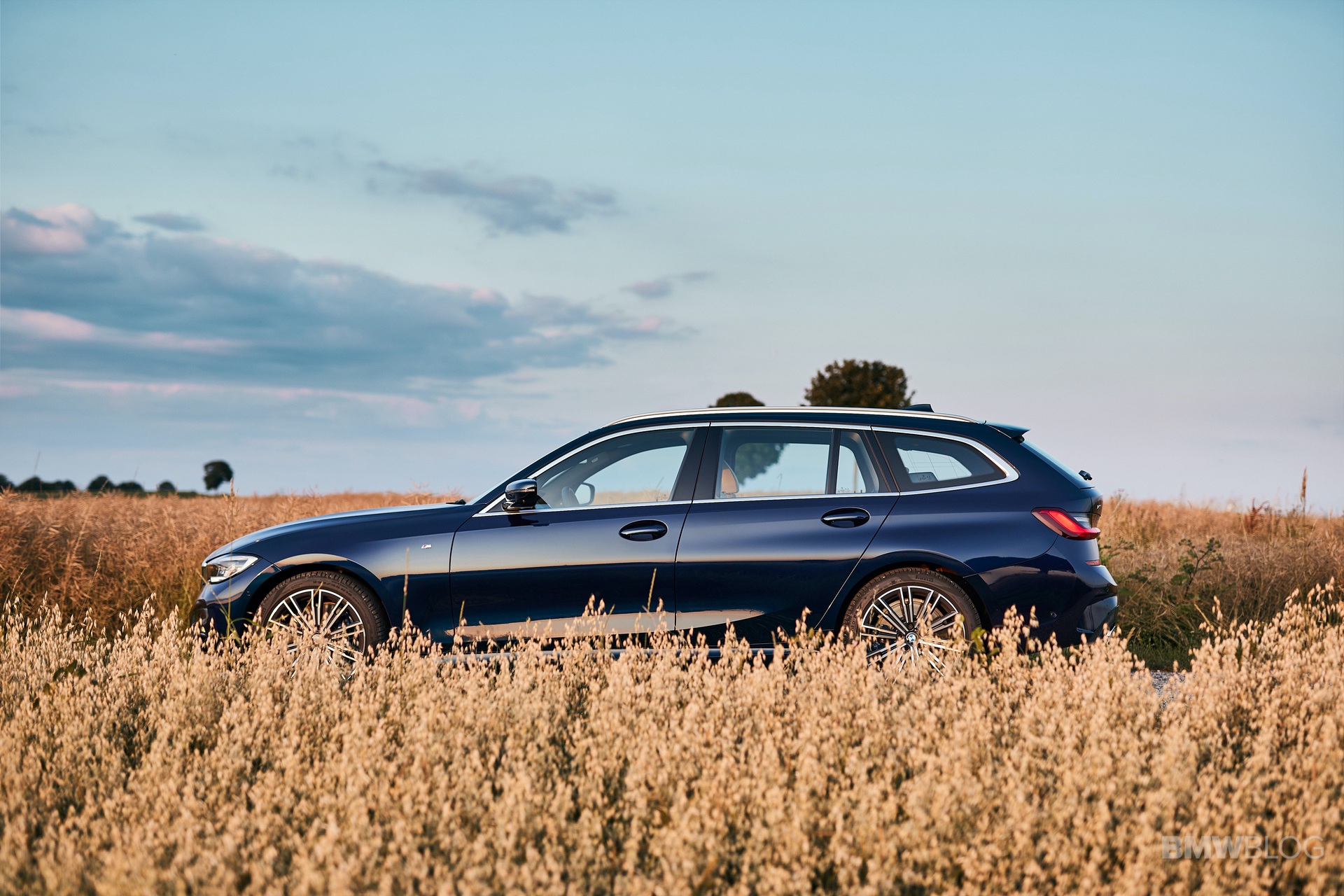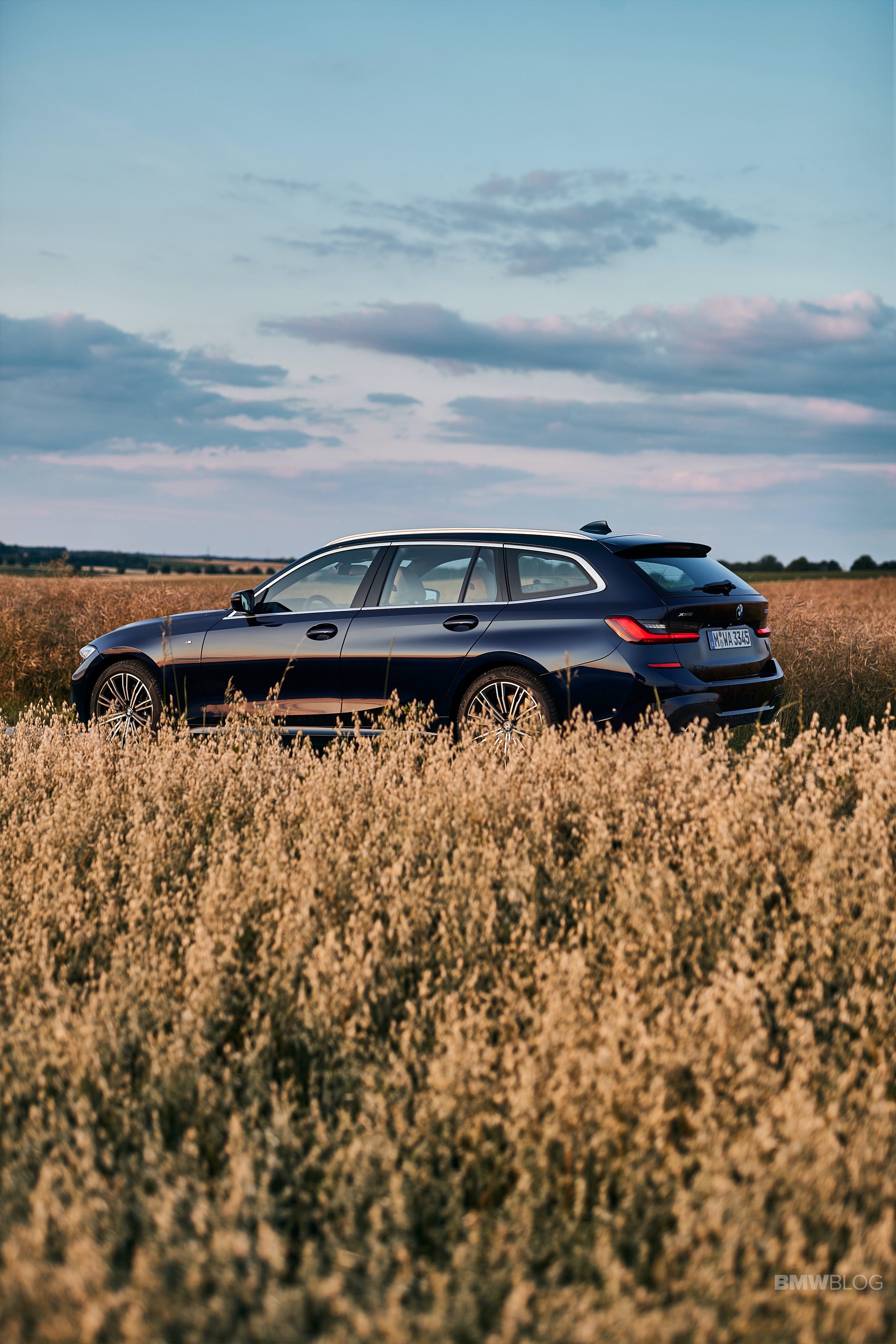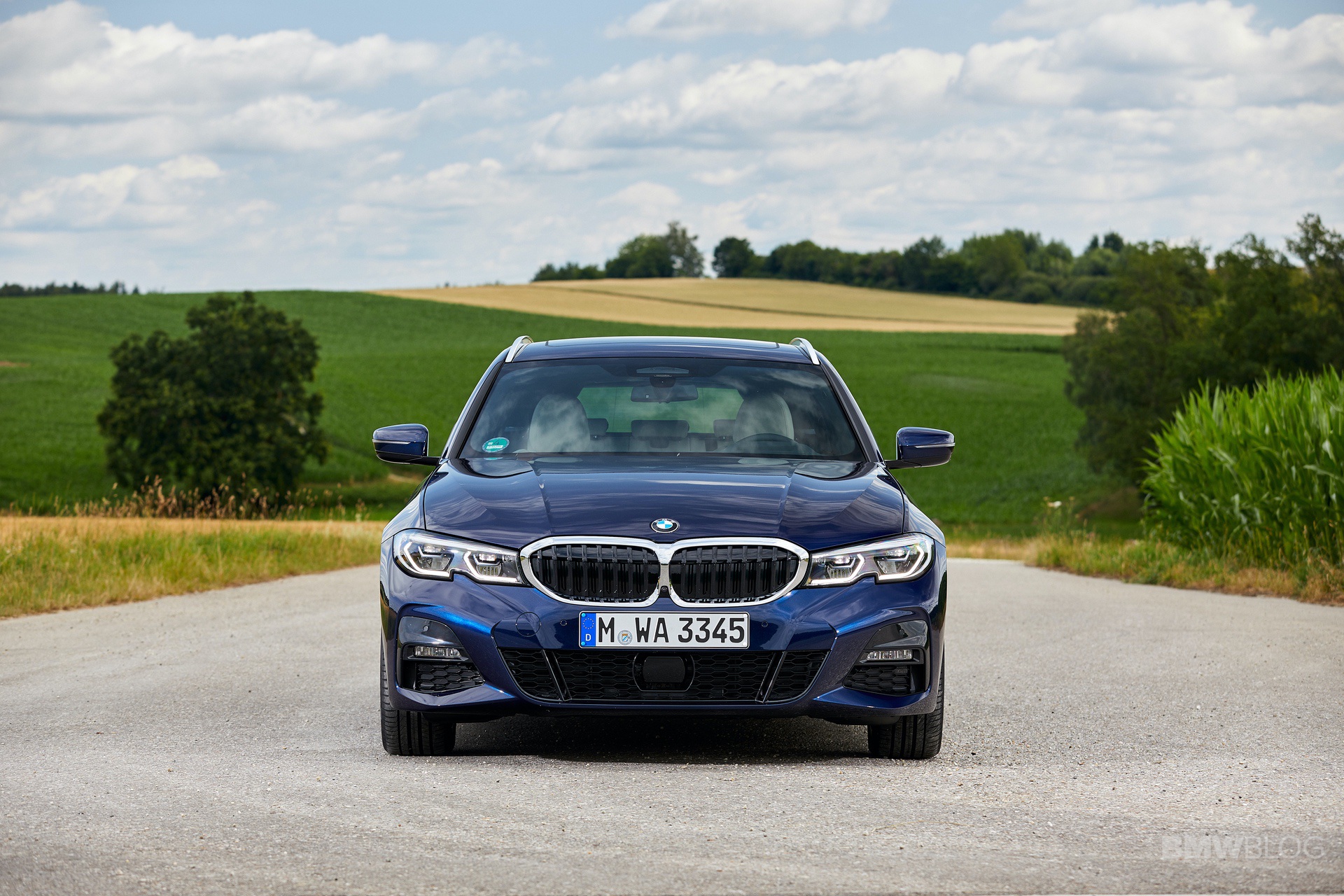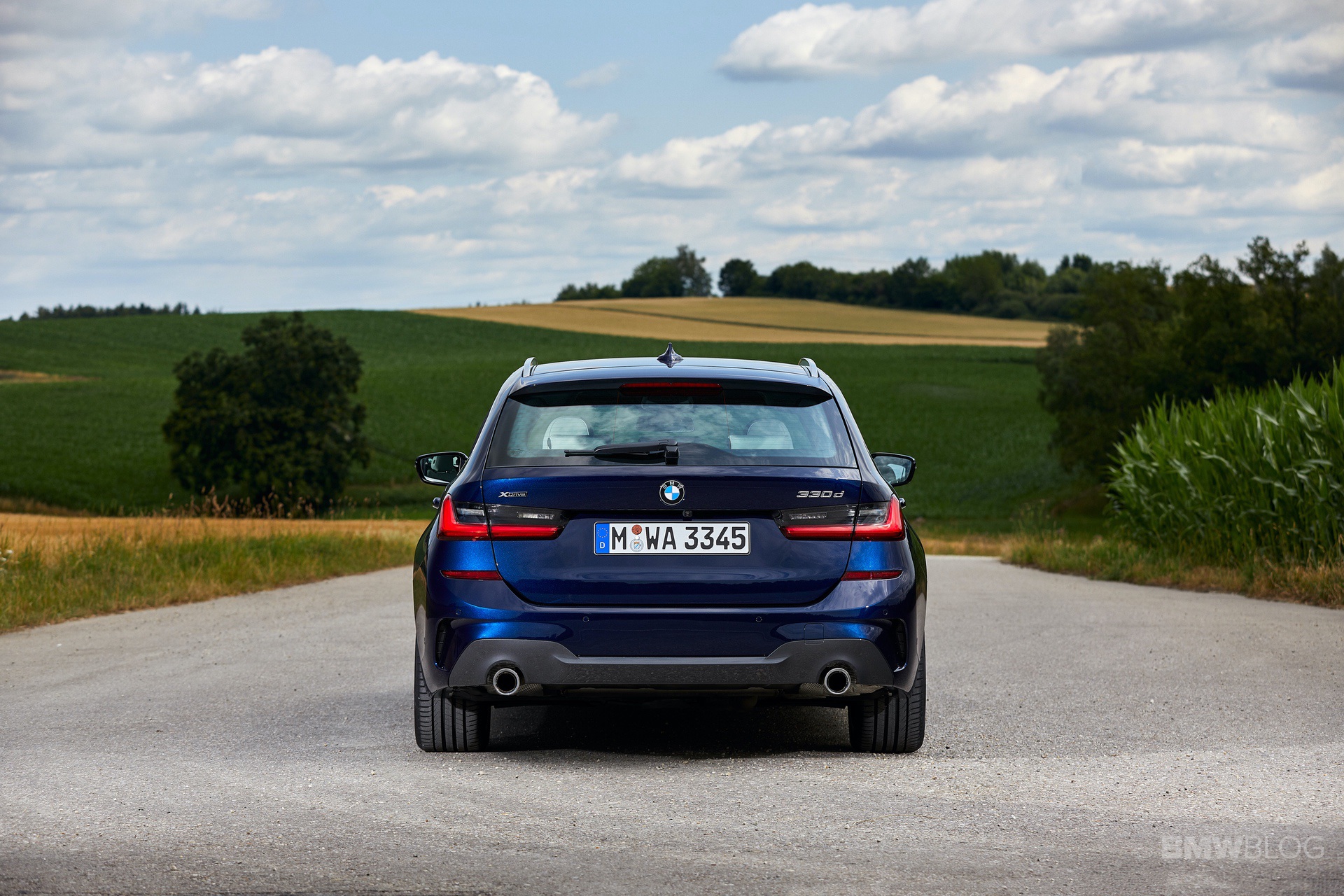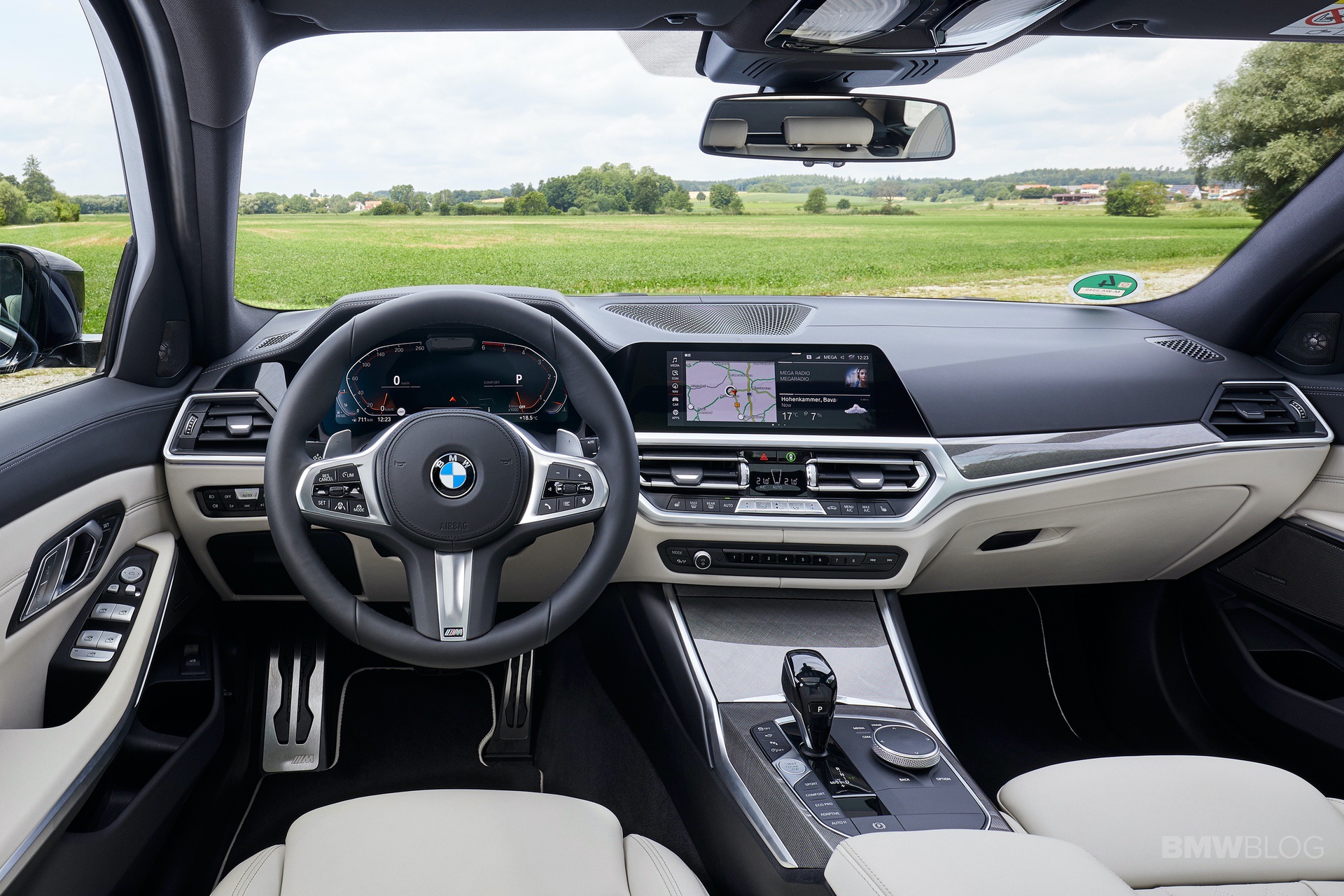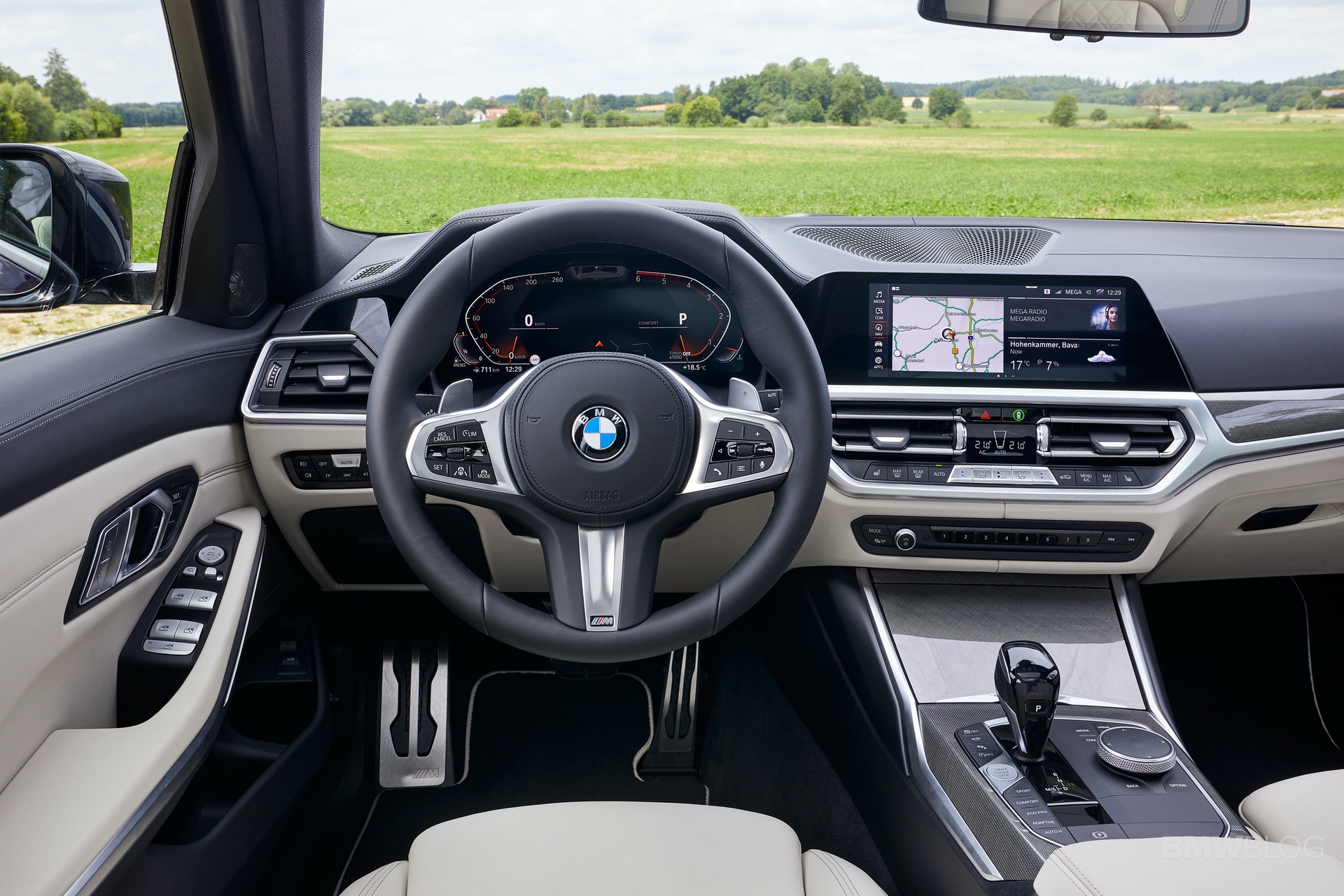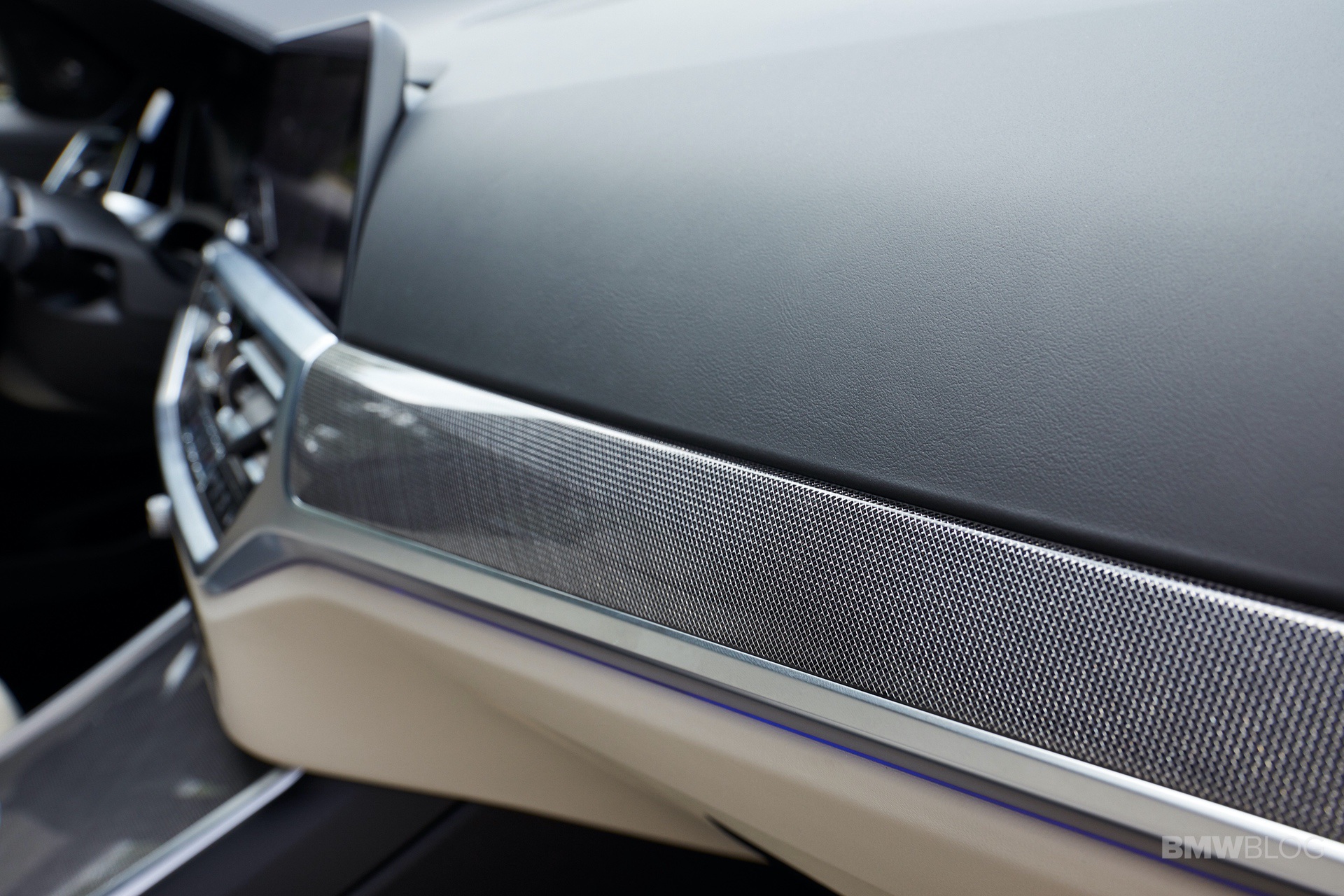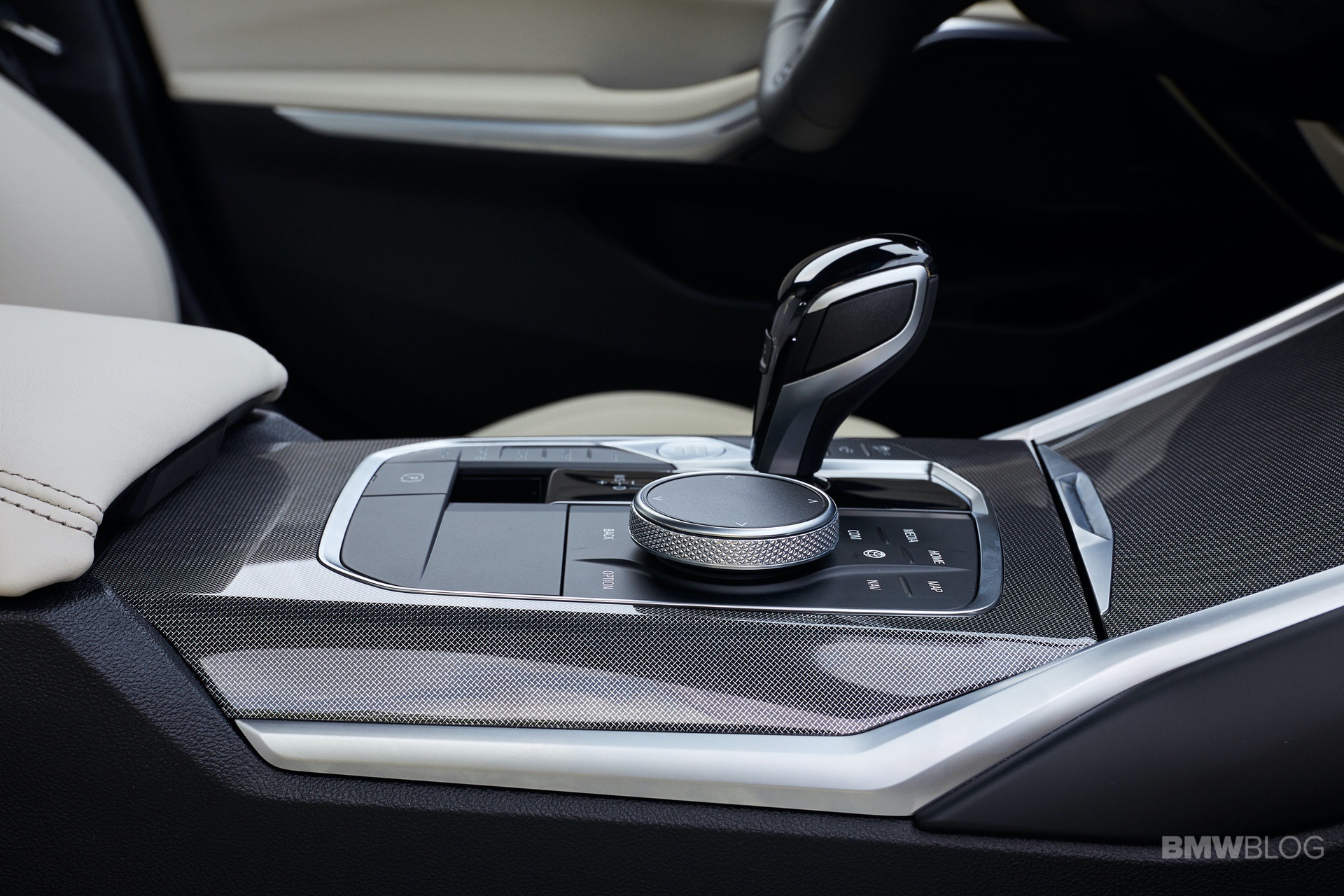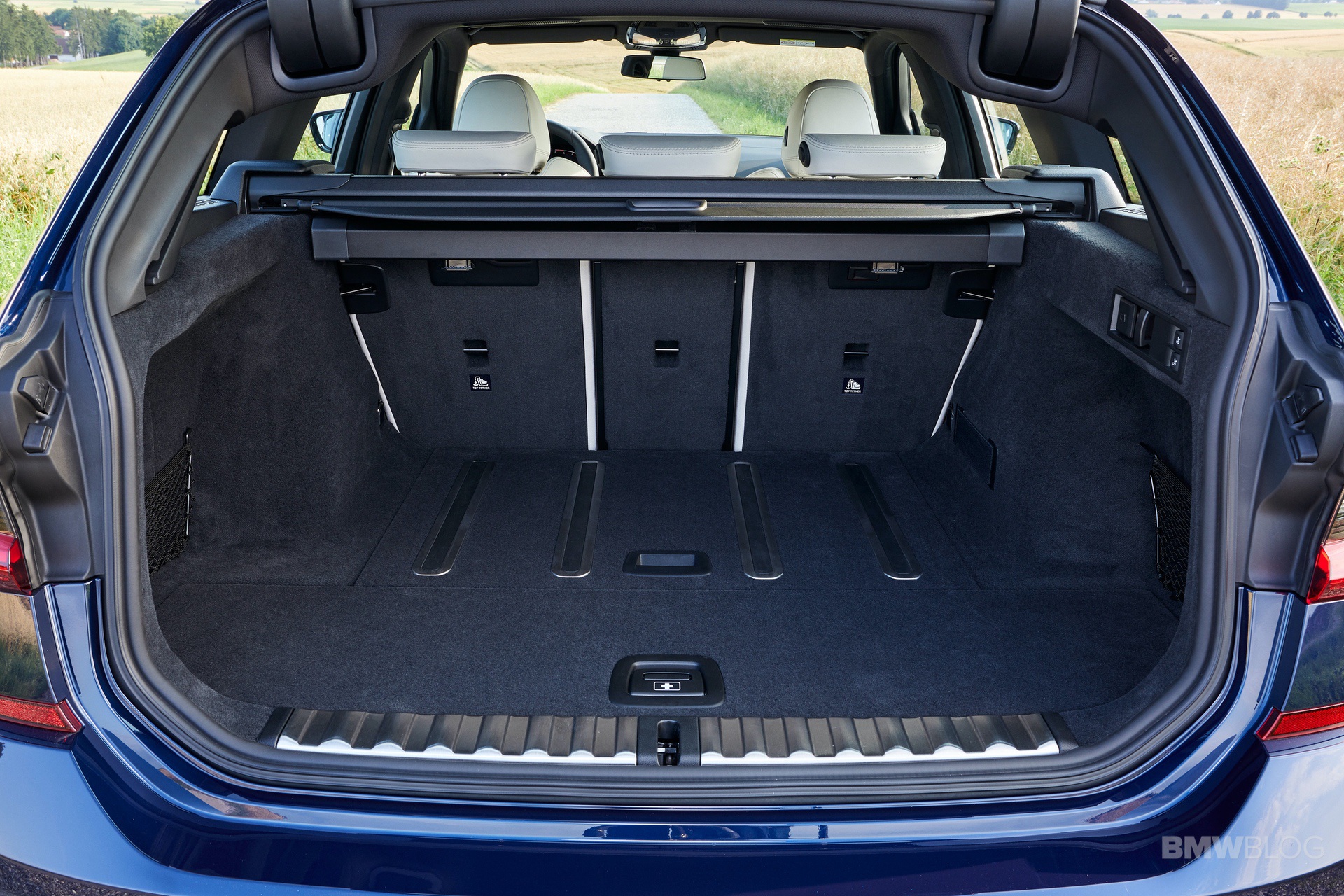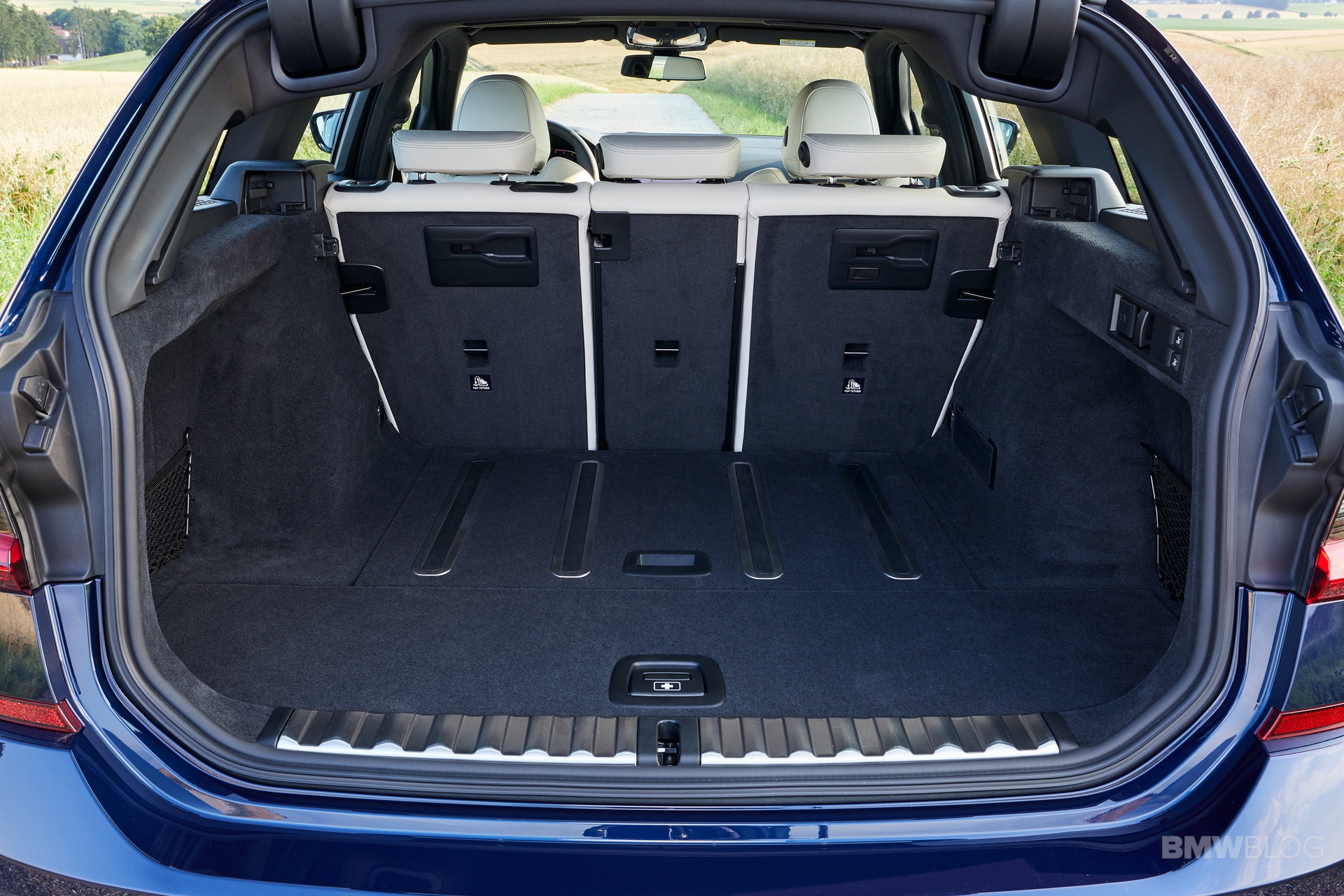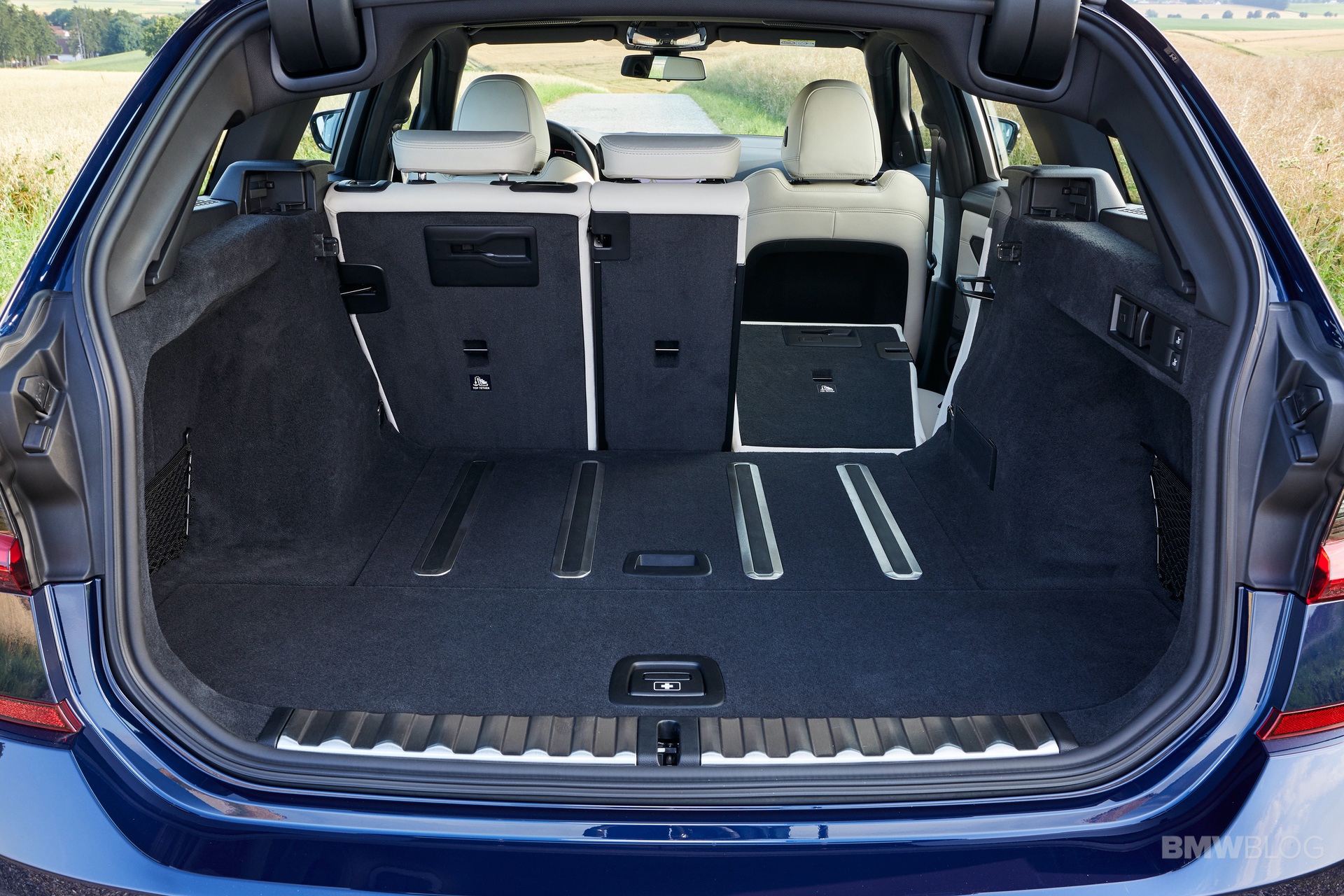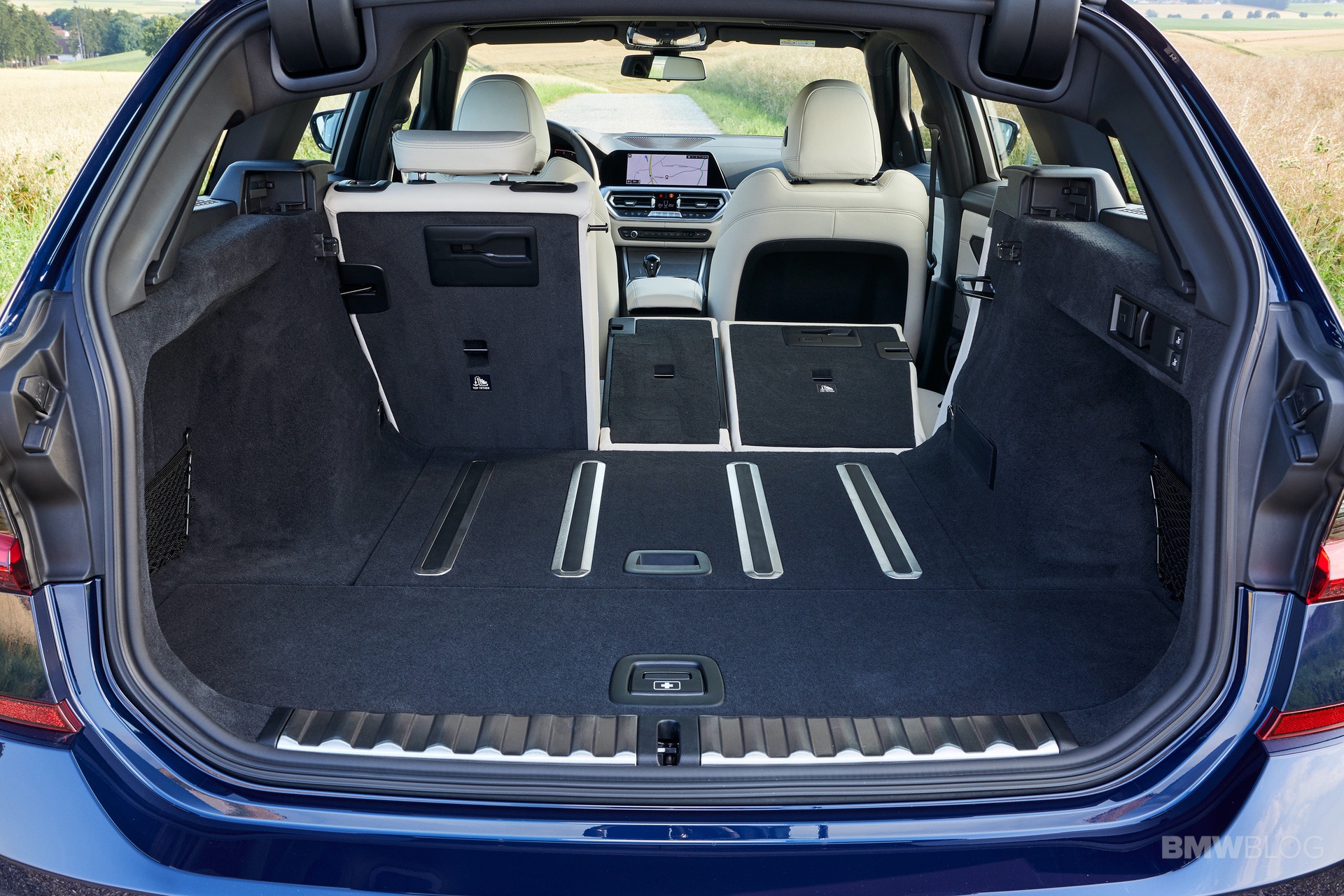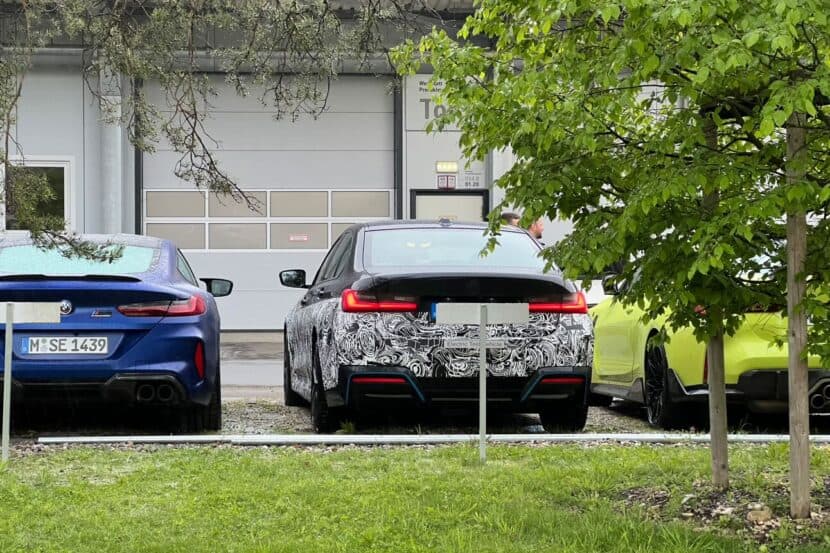The history of the BMW 3 Series Touring is quite unusual and it goes something like this. In the mid-80s, a BMW engineer by the name Max Reisböck wanted to go on vacation with his family, but none of the BMWs at the time were big enough to fit his two children and wife, and the luggage, of course. His solution was to buy an E30 323i sedan, move it into a friend’s workshop and start an adventurous DYI project. Reisböck didn’t even bother drawing up blueprints, all the schematics were in his brain.
Using the off-hours tools and talent of the prototype shop, without the knowledge or blessing of management, his ad hoc team members created the first 3 Series wagon. The work took about six months, and by the end of the build, Reisböck had moved the C-pillars back to the corners of the car and started to extend the roof panel and add new rear door frames. The most challenging part was finding a rear windscreen, but that’s not something that could have stopped the ingenious engineer.
“The rear windscreen had to be certified, yet there was nothing in the BMW arsenal of that that size or shape,” Reisböck told us at a recent event in Munich. “So I headed out to the Olympic Stadium here in Munich for a football game knowing there will be a lot of cars in the parking lot. With a tape measure, I sized all the windscreens until I founded the right one – from a Volkswagen.”
Now the prototype is finished and they showed it to Reisboeck’s boss, who liked it enough to present it to the chairman, who loved it. The project was given the green light with only minor modifications, and series production began for the 1988 model year.
A Success Story
Fast forward 31 years and five generations later, and the BMW 3 Series Touring is one of the brand’s best selling cars ever. Over 1,700,000 units were sold since its inception, with over 500,000 of them being sold on the outgoing F31 platform – nearly 25 percent of all 3 Series. As expected, the top market was Europe, with 33 percent of the models sold going to German customers, 13 percent to the UK and 10 percent in Italy. Other successful countries who imported the 3er Touring were Japan, South Korea, Taiwan and Australia.
So it’s fair to say that with every generation, the stakes of the 3 Series Touring are quite high. Cue in the recently unveiled G21 BMW 3 Series Touring which made its debut in June. Compared to the F31, the new sports wagon measures an additional 76 mm in length, 16 mm in width and 8 mm in height.
Cargo Space and Practicality
The new G21 can swallow 500 liters of cargo with the rear seats occupied, which is 5 liters more than the old F31. With the rear seats folded down, total cargo volume increases to 1,510 liters. Like with other BMW wagons, the rear window can open independently of the tailgate, which makes loading just a bag or two into the trunk much easier.
Speaking of making loading items easier, the rear tailgate opening is now 112 millimeters wider than before, making it easier to load large items into the trunk. It also features a floor lip that’s been lowered from 35 millimeters to just 8 millimeters. That not only helps loading heavy items in but also unloading those same heavy items. That independent rear window’s aperture is also widened by 20 millimeters over the outgoing car.
Furthermore, for the first time, the 3 Series Touring comes with an optional anti-slip rails system, as we’ve seen on the G05 X5. The rubber anti-slip rails on the cargo floor inflate when the car is in motion to keep the luggage from sliding around.
Since cargo space is one of the main stories with BMW touring, the G21 makes no exception – under the cargo floor, there is an additional storage compartment which can be used for the boot cover and the partition net.
Driving Dynamics
While its customers love the car for the practicality aspect, the driving dynamics are equally important to majority of them. With that in mind, BMW wanted us to sample the new 3 Series Touring, so we headed out to Munich for yet another driving event. Despite not coming to the US, the touring tells a global story, so we were happy to share it with you.
In a conversation with the BMW engineers prior to my test drive, we dived into some of the tech bits behind this new platform. What I learned was that a lot of work went into the driving dynamics, so that effort started with an increased rigidity of the body. BMW says that it’s 25 percent stiffer than the previous model, and even up to 50 percent in some areas. The weight distribution is the ideal one — 50-50 — despite having a 41 mm longer wheelbase. Both the front and rear track are wider, 43 mm and 21 mm, respectively. It’s also about 85 kilos heavier than the 3 Series Sedan and around 10 kilos lighter than the previous F31 generation.
But that’s not all. As an option, and because BMW knows how important the driving is to a 3 Series Touring customer, an M Sport differential was installed on our test car. The diff is available in conjunction with the M sport suspension or the Adaptive M suspension for the 330i Touring, 330i xDrive Touring, 330d Touring models, and on the top model M340i xDrive.
A Powerful Diesel With M Looks
Which brings me to our tester. The new BMW 330d xDrive Touring uses a 3.0 liter turbocharged inline-six diesel to make 265 hp and 428 lb-ft of torque. For the 330d, 100 km/h takes just 5.4 seconds, but its fuel economy drops to 5.6 – 5.4 liters per 100 kilometers. The transmission of choice is the proven and tested ZF 8-speed automatic.
To make things even more kosher for us, the Tanzanite Blue Metallic was painted on the outside, while the cabin received a BMW Individual full-leather trim Merino in Ivory White. Another novelty from the BMW Individual was the interior trim finishers in Aluminum fabric high-gloss. And since I love all my tourings with an M Sport Package, BMW made sure we got to test one.
In M Sport guise, the 3er gets larger, more aggressive air intakes in place of those NACA-style fog-lights. You also get black Shadowline trim around the windows and black roof rails. Whether or not you like the M Sport package more, it’s certainly more aggressive looking.
The Drive
A 2-hour loop around Munich will once again put me onto some curvy backroads where one could only hope for no traffic and lots of smooth asphalt. And that’s exactly what I got, along with my co-driver, a talented fellow journalist from Auto Zeitung and a fantastic driver. Bavarian, of course. We started off slowly in Comfort to see if BMW has stuck to their recent strategy – offering a calmer and softer mode for every day driving. And just like in other new BMW models we’ve recently tested, the Comfort mode stays true to its name with a less supped up steering and suspension, which makes it ideal for daily commutes, Autobahn driving or family road trips.
Despite having its personality toned down, the new 330d xDrive Touring is sporty enough even in the Comfort mode, with a slight body roll, but enough power and grip to entertain you. There is a bit of lightness at the center of the steering wheel, but that’s something I expected.
Thanks to the Acoustic Glass, we’re well isolated from the outside noise, but without completely detached from the car. The wagon also runs on 18 inch wheels with all-season tires (Pirelli Cinturato P7), so the ride will be a bit harsher and noisier than usual. A set of performance tires would be a God’s gift in the summer.
Next, as always, I switch over to the Sport Plus mode ensuring that all configurable areas of the car are set to maximum performance. The steering is tighter, the damper are stiffer, the engine is thirstier and the exhaust is throatier. The wagon feels even more planted on the road and despite being thrown harshly into some corners and chicanes, the bodyroll is amazingly inexistent. But being a bit slower and less experienced on these roads than my German co-driver, we switched positions to test that theory. Max is now fully on the gas pedal pushing the touring harder than I’ve ever seen off the track.
His confidence in the car grows by the minute and we’re now traveling at high velocities that induce some tire screeching and tail spins. Yet, the new 330d Touring stays firmly glued to the road, with steering inputs sharpened up and full torque at our disposal. It’s simply impressive that a sports wagon of this size exhumes that much confidence. The M Sport brakes are just as wonderful, as you’d expect, biting down with a soft push.
At the next driver change, I can smell the rubber and the brakes, a sign that we’ve properly tested this new touring. I’m now behind the wheel again, a bit more cautious than my new friend, yet fast enough to get me in trouble, by US standards. The steering feels heavy and well connected to the road, sending constant feedback of where the wheels are pointing and of the amount of grip available. The xDrive system is simply award-winning, keeping the car in check even when you make unexpected steering adjustments. It’s hard to describe the feeling in words, but this touring feels much more smaller than it really is.
The shifts are quick and, of course, controlled by the shift paddles behind the steering, while the 3.0 liter diesel will certainly be missed in the next decades to come. The torque is available at low rpms, so it’s easy to get thrown back into the seat if you floor the pedal. That’s probably why the fuel consumption exceeded 7 liters on average.
If I were to pick a suspension, then I would go with the M Adaptive, mostly because of its fully electronically controlled shocks. Same as the standard one, the new suspension has lift-related dampers which offer variable load paths, and that’s exactly what you’d need during a spirited drive. The M Adaptive works wonders modulating the behavior at each corner of the car, so driving on uneven surfaces shouldn’t much of an issue.
The last stretch brings me back on the Autobahn where the 3 Series Touring continues to impress. The power delivery is smooth and brings up the car to 200+ km/h speeds in an effortless manner. Once again, thanks to the additional interior noise-reduction measures, the cabin stays quiet and comfortable for storytelling.
Should I Buy One?
Clearly I have yet to compare the new G21 Touring to its competitors – and there are plenty of them – but if I were to look at the previous generation F31, then it’s clear who the new boss is. The G21 BMW 3 Series Touring is far more rounded-off car, with plenty of tech, driving assistance features and refinement that will certainly make it a top seller. What’s even more exciting is that it has not lost its rear-wheel drive behavior, so as long as you learn how to treat it that way, you will have lots of fun with it.
REVIEW: 2019 BMW 3 Series Touring
Exterior Appeal - 10
Interior Quality - 9
Steering Feedback - 9
Performance - 9
Handling - 9
BMWness/Ultimate Driving Machine - 8
Price Point - 9
9
The new BMW 330d xDrive Touring uses a 3.0 liter turbocharged inline-six diesel to make 265 hp and 428 lb-ft of torque. For the 330d, 100 km/h takes just 5.4 seconds, but its fuel economy drops to 5.6 – 5.4 liters per 100 kilometers. The transmission of choice is the proven and tested ZF 8-speed automatic.


